Distinguished
Reporting
Award
Among the Taliban
published by ZEIT Magazin, Germany
The first contact. A voice on the mobile phone crackles through the speaker. It sounds resolute, but also young, fresh, almost vulnerable. The voice gives us our final instructions, even as we are already on the road. Our destination is the Ghazni province in central Afghanistan, a four-hour drive from Kabul. On our journey along the National Highway, we have passed by destroyed army bases and the wrecks of burned-out military vehicles. For long stretches, the road is ripped open by blast craters every hundred yards. The voice then orders us to turn off the main arterial, directing us further and further away from the National Highway. Deeper and deeper into a region where there are almost no roads, only goat paths. The tires of the Toyota spin in the sand and the car bottoms out on the rocks. A short time later, we pass the last government outpost, a fortress on a hill with an Afghan flag flying above it. Then, the connection breaks off.
“Is this the right place?” our driver asks a moment later. We wait nervously in a village square. It is completely empty, the village apparently deserted. Our driver looks at the phone, which continues to indicate we have no signal. We were told on the phone that we would meet in the first settlement on the other side of the government lines. A few meager mud huts. The people here fled in fear years ago. No man’s land. “I don’t know if this is the right place,” our driver says again. We consider whether to turn back when seven armed men suddenly stride out onto the square. “Peace be with you,” one of them says. It’s the same boyish voice we know from the phone.
He smiles, but it fades quickly. He introduces himself as Nisar, a name he knows we know is not his real one. He will be our escort for the next few days. We, reporters from ZEITmagazin, spent months preparing for this journey. But we’re still nervous. We are putting our fates into the hands of people we previously feared would kidnap us.
Western journalists have only ever spent a few hours at a time with the Taliban for security reasons. We are the first reporters in years to entrust ourselves to them for a few days. We want to report on the people who fought the most powerful military in the world to a standstill, the people who established a country that is not officially on any international map, the Taliban state. The Taliban are feared by many, and yet they are revered. People are willing to die for the Taliban, to be tortured and imprisoned on their behalf. For many, the Taliban are a beacon of hope.
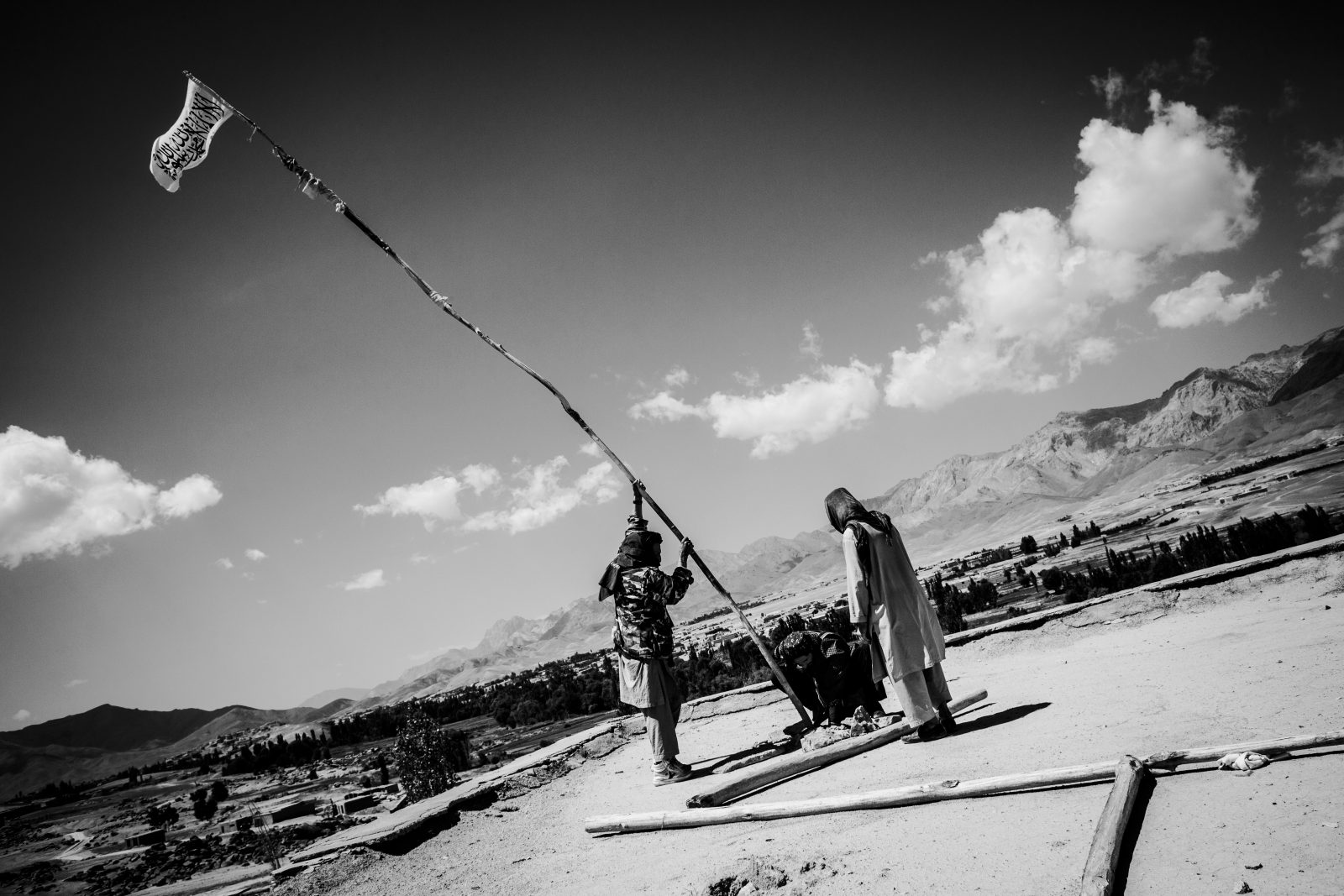
Rashidan, Ghazni province, Afghanistan – 01.09.2020: Taliban are rising the white Taliban flag on the roof of the former district and police headquarter of Rashidan district. Photo: Andy Spyra
By fall 2020, the holy warriors are once again in control of 80 percent of Afghanistan. The government of President Ashraf Ghani has been driven back to the provincial capitals and to the national capital of Kabul, essentially a rump state that continues to shrink. The Taliban, in fact, has already reached the suburbs of Kabul, and all the refugees who fled the provinces for the capital in recent years are crowded into an ever-smaller space. The United States is withdrawing its troops after a two-decade presence in Afghanistan, while the level of corruption inside state agencies is reaching an appalling scale. Everywhere, people are trying to get as much money out of the country as possible in preparation for their own exile. The state is on the verge of collapse. It is feared that the first army units will soon begin to defect. In Doha, delegations from the government and the Taliban have been negotiating a cease-fire since mid-September, but many believe the true outcome will be capitulation.
Nisar, the young Talib, is dressed entirely black, complete with a black turban. With his Kalashnikov slung over his back, he leads the way on his motorcycle. The road heads into the mountains, steeper and steeper. We pass by the last fields of green and are suddenly surrounded by bare white cliffs, the narrow road carved into the mountainside, with a steep cliff on the valley side. Rocks dislodged by our tires plunge hundreds of meters. Nisar, a diminutive silhouette in black, waits for us at each switchback, turn after turn, all the way to the summit of the pass, an altitude of just under 3,000 meters.
Shortly before our trip, our arrangements with the Taliban threatened to fall through. Even just establishing contact is tenuous. There is considerable mutual distrust, and a number of journalists who thought they could rely on the word of Taliban commanders wound up getting kidnapped. The feeling you get when leaving the government’s sphere of influence is one of complete loss of control. Like stepping out the door of a spacecraft into the blackness of space. Our only guarantee of not disappearing into the barren landscape is a voice message on WhatsApp. It’s our lifeline: again a voice, this time an older one. It’s the voice of the spokesman for the highest-ranking Taliban. An audio message guaranteeing our safe passage.
Those who are otherwise notorious for kidnapping Westerners are now our protectors – or so we hope. At around noon, we reach the valley floor on the other side of the mountain range. The Taliban have been in control here for almost 10 years without interruption. The Rashidan District is relatively small, but strategically important because it borders directly on the provincial capital of Ghazni. A dozen villages are nestled in a green strip of fields and copses of trees that follow the course of a river at the bottom of the valley. Otherwise, it’s just a barren region of dust and stone. Nisar is guiding us to the district center, which is located in the village of Hussain Khel. It is also home to a market, where you can still see traces of past battles. Nisar stops at the high school, where the students curiously peer out of the windows. A retinue of 20 men in black turbans is standing in front of the entrance. They’re waiting for us.
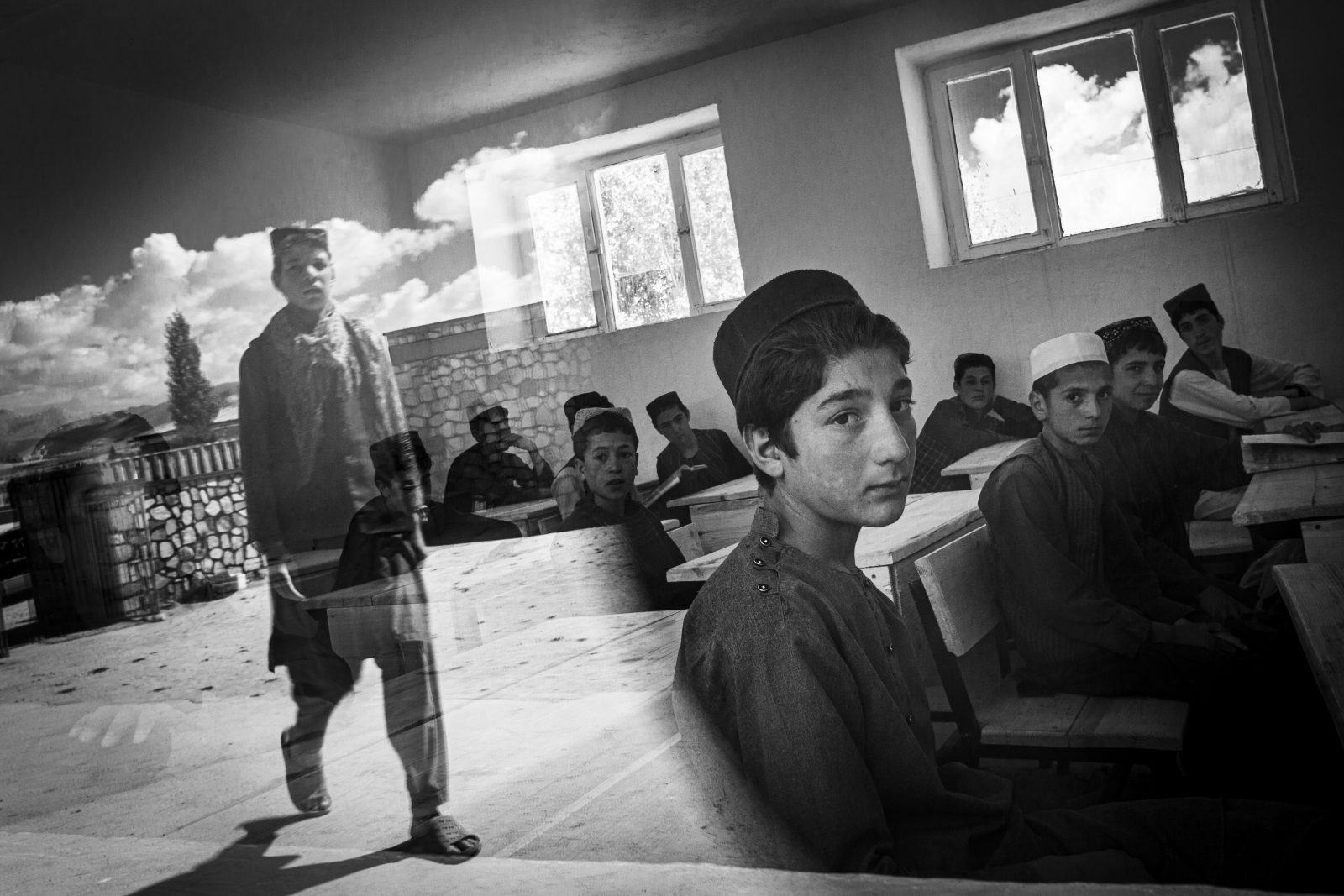
Rashidan, Ghazni province, Afghanistan – 01.09.2020: Scene in the high-school of the Rashidan District of Ghazni Province. The salary of the teachers is being paid by the government, despite the school being in Taliban territory. According to the teachers of the school, there is little interference of the Taliban with the curriculum of the school as worldly subjects such as history, maths and science are being taught. It’s a gender-segregated high-school, the high-school of the girls is located at the other side the valley. Photo: Andy Spyra
“I welcome you to the Islamic Emirates,” says Maulavi Nasrat, the Taliban commander of Rashidan. His handshake is unsteady; he hugs us tentatively according to Afghan custom. “The Americans and you, the allies of the Americans, have attacked our country,” he says. “We were only defending our country. You forced this war on us.” Nasrat invites us in. The Taliban sit down with us on the floor of the teachers’ lounge. They have never met journalists from the West. Some look upon us with hatred, while others – most, it seems – are just curious.
Provincial councilors have gathered in the room, judges from various courts, several deputies from the morality police, who check villages for compliance with the prescribed beard length and Islamic dress code, the education officer who oversees schools, a tax collector – essentially a cross-section of the Taliban bureaucracy that has grown up in recent years. The government in Kabul has been rendered to the history books for many years. “Take a look around our district,” says Nasrat, the commander, who is in his early thirties. “Talk to the people. They’re happy because we abide by the Koran and Sharia law. The government in Kabul, which you foreigners have installed, indulges in corruption. It is morally corrupt. There is no corruption here. We serve Allah and solve people’s problems.”
No one in Afghanistan had thought the Taliban would be back. They were crushed. The U.S. forces had bombed them into irrelevance within just a few weeks of the terrorist attacks in New York in 2001. It has been estimated that 20 percent of all Taliban fighters were killed at the time. The rest fled to Pakistan or went into hiding. To prevent Afghanistan from being dominated by radicals once again, the international community decided to undertake a massive effort. Fifty countries sent in soldiers and development workers. The U.S. alone is said to have invested $1 trillion in the effort. The aim was to use the example of Afghanistan to prove that it is possible to change a country for the better and wrest it from evil. And that evil had a name: the Taliban.
Not much is known about the early days of the Taliban. Its founder Mullah Mohammed Omar is shrouded in myth, a man who lost an eye fighting the Soviets in the 1980s. Only one photograph existed of him until his death in 2013. Omar taught in a mosque near Kandahar after the collapse of the communist regime in 1992. The country had fallen into the hands of hundreds of warlords and their fighters, the mujahedeen, who were organized into dozens of different alliances that fought against each other. Those were the bloodiest years of the country’s civil war, and Afghanistan sank into anarchy. In early 1994, a local warlord kidnapped two girls, shaved their hair, and held them at his base, where they were raped. Omar called together the 30 students at his madrassa, his “Taliban” – the word Talib simply means “student.” They armed themselves with 16 rifles and went to the warlord’s house, where they freed the girls. They then hanged the warlord from the barrel of a tank’s gun.
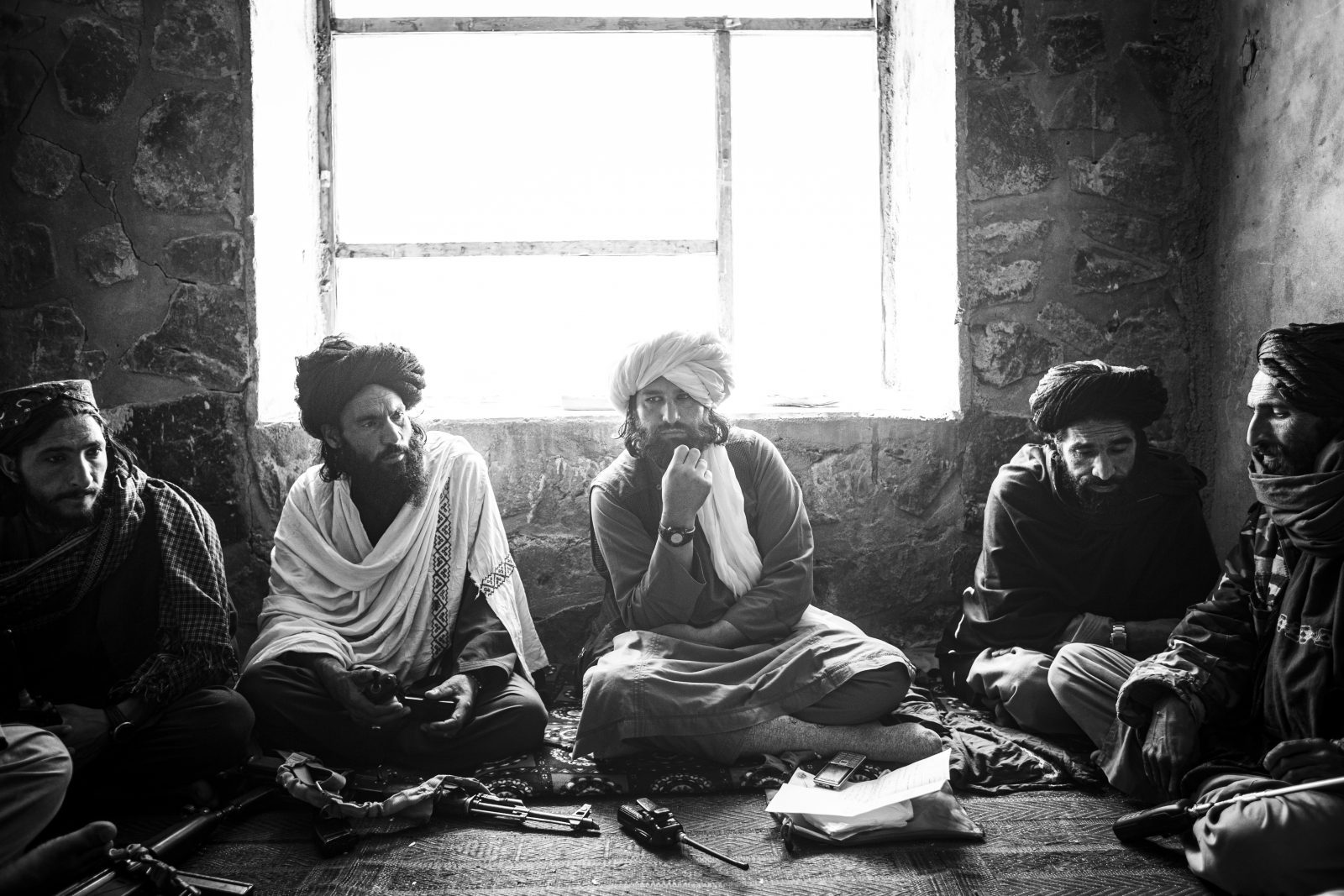
Rashidan, Ghazni province, Afghanistan – 01.09.2020:
Meeting of the Taliban’s justice court in the only remaining intact room of the former district and police headquarter of Rashidan district. The Taliban have managed to establish their own elaborated sharia-based justice system with several levels of conflict resolution. Maulawi Shakir (middle) is presiding over the local court in Rashidan district of Ghazni province. Photo: Andy Spyra
The history of the Taliban, which the world would later come to know as a movement that oppressed the women of an entire country, ironically began with the liberation of women. More and more people began seeking out Mullah Omar after that to ask for his help when warlords attacked. Students from other madrassas also joined him. Within months, they controlled entire provinces. By the end of the year, Mullah Omar had 12,000 followers. Soon he was calling himself Amir-al Mu’min, “the leader of the faithful.” Money began flowing in, with mujahedeen factions giving him money in the hopes of leveraging the Taliban against their opponents. Pakistan, which had supported the mujahedeen in the fight against the Russians, gave the Taliban money in the hopes of exerting control. The Taliban started out in Afghanistan as bearers of hope. They seemed to be the power that could finally, after 25 years of war, bring peace to the broken country.
But they only brought another bloody war. Afghanistan has now gone for 42 years without peace.
“We have learned from the mistakes of the past,” says Nasrat, the commander in Rashidan. In the past, they would have conquered a district and installed one of the fighters as governor. “They didn’t know how to deal with the population,” he says. “It’s different now. We have many experts.” He keeps looking uneasily at Nisar, who has taken a seat at his side. The young Talib who picked us up was assigned as our escort by the Quetta Shura, the Taliban leadership body in Pakistan. He wears kohl around his eyes, which in Pashtun culture is supposed to protect him from the evil eye. He is just 23, his beard not yet full. Nasrat, who towers over him by a head, is 10 years his senior and has the calloused hands of a man who is used to hard labor, a peasant turned revolutionary. “We have so many experts,” says Nasrat, the commander, “that we can manage all of Afghanistan. We are now familiar with the world.”
“Tell them that we do a better job now of listening to the people,” Nisar urges. “We are paying more attention to what the people want,” Nasrat says. “How about,” Nisar suggests, “you tell them that we will have peace once all the foreign troops have left.” Nisar provides the answers, openly and unapologetically. He’s part of the Taliban’s press department, which operates radio stations in most provinces, publishes newspapers and manages social media platforms. Men like Nisar are the young elite of the Taliban. They are fluent in modern technology and film young suicide bombers before they blow themselves up in crowds.
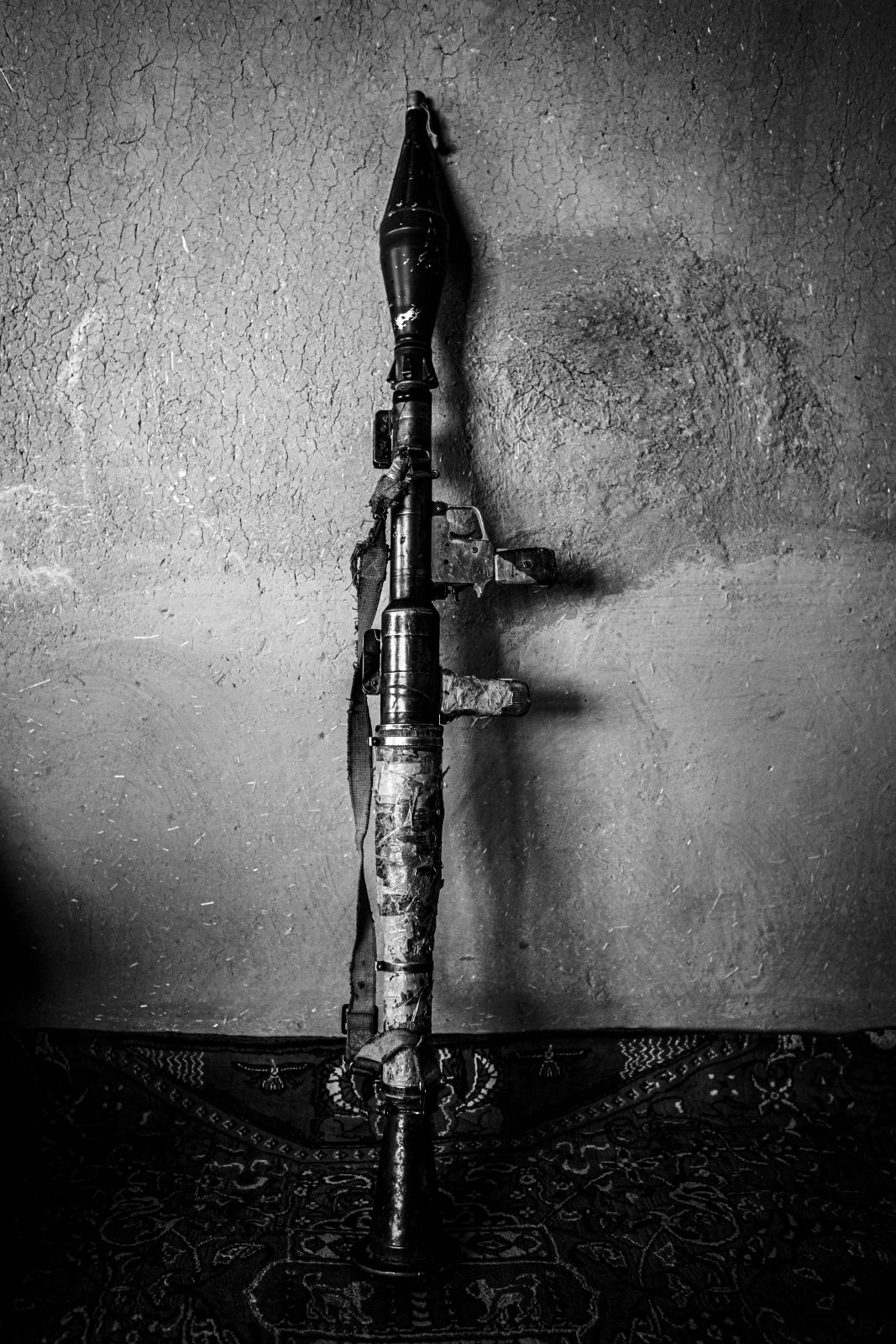
Nawur district, Ghazni province, Afghanistan – 02.09.2020: An old RPG (Rocket-propelled-grenade) of the Taliban, wrapped in Tape. Photo: Andy Spyra
The symbol of their victory is perched on a hill above the village. Nasrat and Nisar leave the school and cross the market on foot. It officially belongs to the government, but the vendors have long been paying their rent to the Taliban. There are three pharmacies, several mechanics, who mainly repair Taliban motorcycles, grocers and a few tailors. Of 250 stores, 50 are open. Only very few men dare not wear a full beard and turban. The Taliban has reinstated its old dress code. The beards can be no longer or shorter than a fist, just as the prophet wore his. Shopkeepers and customers look at us curiously, unable to tell if we’re hostages or guests.
And then we are standing in front of the ramparts of the district headquarters, a fortress high above the valley. “It was my greatest victory,” Nasrat says as he steps through the gate. The place is in ruins. Grass is growing in the courtyard, the wall surrounding the structure has collapsed in several places, and the two main buildings have been blown open by explosions. Eight years have passed since Nasrat’s group stormed the facility, destroying three tanks, he claims, and killing 46 policemen. There are still traces of the final desperate attempts to ward off the attackers: The windows of the buildings have been sealed with clay and the holes in the walls reinforced with sandbags. “Look at how they treated their prisoners,” Nasrat says, showing us a concrete bunker dug into the courtyard. The police, he says, would lock away dubious villagers in the pit and leave them there. “It’s a violation of human rights,” Nasrat says, ignoring the fact that the Taliban also lock up their prisoners in cattle pens and caves. A Taliban flag, white with black lettering, flies from the roof: “There is no God but Allah, and Muhammad is his messenger.”
Only a single room in the complex is still intact, a bare, bleak room with raffia mats on the floor. This is our headquarters now, Nasrat says, but it’s not really true. The Taliban rarely stay in one building for very long out of fear of drone strikes. This was also the case during our trip. Meetings are short and hurried. They are constantly in a hurry, arriving on a dozen motorcycles. Nasrat, as commander, is the only one with a car. Then the group scatters, all going in different directions without saying where and when we will see them again. At night, we are left to do our own thing, with no one watching us. And yet we’re still certain that Nasrat will be informed of all our movements. At night, the darkness in the mountain valley is almost completely impenetrable. The nearest public power supply is in the provincial capital of Ghazni, 88 kilometers away. Our first host, who is a bit better off than his neighbors, has a car battery as his only source of electricity, powered by a solar panel on the roof. It’s enough to run two light bulbs at the same time.
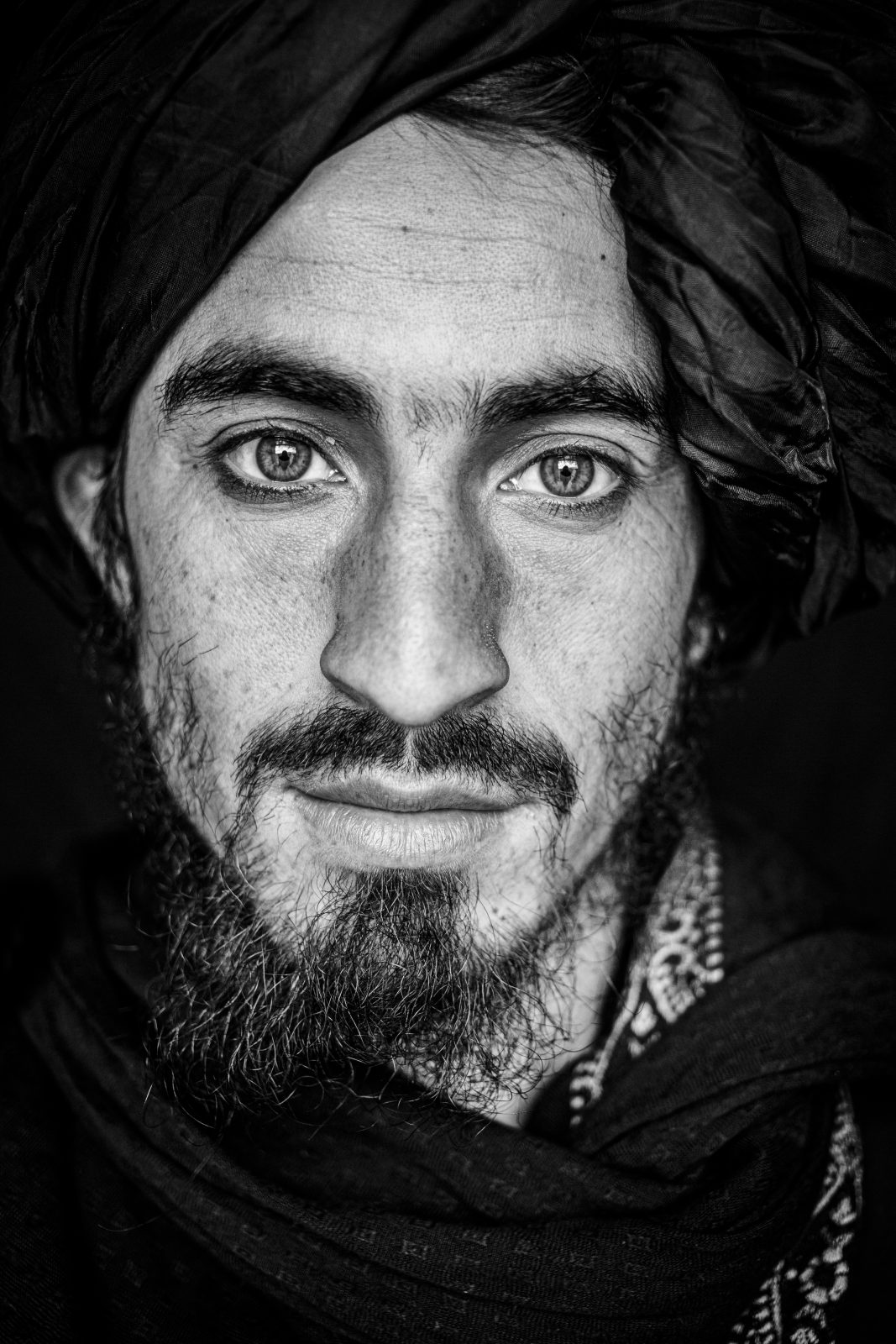
Rashidan, Ghazni province, Afghanistan – 01.09.2020:
Portrait of Nisar, the media representative of the Taliban of Rashidan district in Ghazni province. Photo: Andy Spyra
We talk to the villagers under the cover of night. We meet with others in Kabul after our trip so as not to endanger them. We want to know what life is really like under the new Taliban.
An educated man of around 40 who was born in Rashidan says:
“In the first years after the fall of the Taliban government, no one thought war would return. We were optimistic. Everyone was tired, even our local Taliban were tired. They had returned to their families and became farmers again. They weren’t fighting against the government. At first, the Taliban also weren’t opposed to the international aid organizations that built bridges and irrigation canals in our valley. But today, almost everyone is against the government. The government brought violence to us again. They came to our valley and hunted down former Taliban. Then the foreigners came. They arrived at night with helicopters and arrested people in their homes. They arrested a lot of innocent people.
The government and the foreigners only listened to Commander Chalil. He held power here as a warlord in the 1990s and had to flee from the Taliban. Then he came back with the Americans. Chalil is not a good man – he wasn’t before and he isn’t now. He stole a lot of land. All he had to do was accuse someone of being with the Taliban and they would have to flee with their family, and Chalil got the land. In one village, he wanted to steal so much land that the residents took up arms. They wanted to defend themselves against the thief. Fifteen people died. But the government didn’t arrest the actual thief, but those who tried to protect themselves. That’s why most here are pro-Taliban. The government may have sent us aid organizations, but with Chalil they took away our land.”
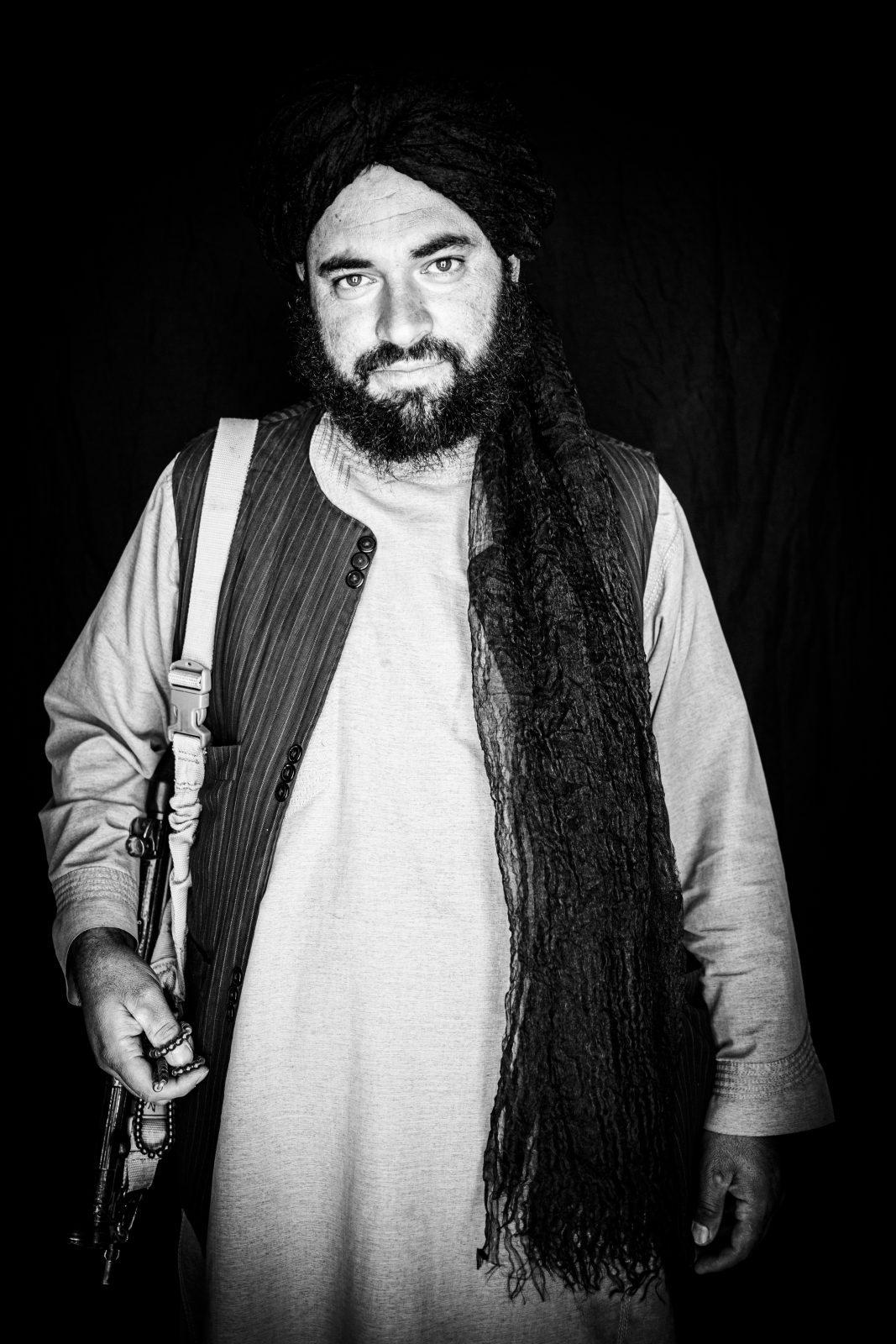
Rashidan, Ghazni province, Afghanistan – 01.09.2020:
Portrait of Maulawi Shakir, the leader of the council of Rashidan district in Ghazni province. Photo: Andy Spyra
The rebirth of the Taliban followed a similar pattern almost everywhere. The West brought back the old warlords, who were often hated by the populace. Men who had spent their lives doing nothing but fighting – through decades of war that left 1.5 million dead. They formed the pillars of the new government under Hamid Karzai, which the West backed with billions of dollars. As the warlords took power in the provinces, the central government remained too weak to control them. The warlords had themselves elected to parliament, bought political offices, became governors, ministers or generals in the new army. Their sons founded companies that received lucrative contracts from the U.S., NATO and many development aid organizations. They didn’t pay taxes, they crushed competition through violence and corruption and snatched up real estate abroad.
The Taliban tried to reorganize as early as 2002, but failed. Most Afghans rejected them, hoping for a better future with Karzai, and reported their identities to the Americans and government forces. In exile, in the vast refugee camps in Pakistan, the Taliban broke into three different factions called shura. One shura was formed in the city of Quetta, led by parts of the old Taliban elite. A second one formed in Peshawar. A third one, the most radical, emerged in Miran Shah. It was under the firm control of a clan, the Haqqani, a name that would soon be widely feared because the Haqqani family maintained the largest training camps for suicide bombers in Afghanistan. By 2015, the Haqqanis had reportedly deployed 1,160 suicide bombers, 843 of whom had “successfully” completed their missions.
As disenchantment with the government grew among the populace over the years, the Taliban strengthened. The Quetta Shura dominated in the early years, before momentum shifted to the Peshawar Shura and then swung back to Quetta, which continues to be the dominant force today. The fighters from the three Taliban shura have fought against each other at times and also captured territory from each other. According to the analysis of international conflict researchers, Pakistan restarted its payments to the insurgents in 2004, about $20 million annually, before increasing that amount to as much as $500 million a year. Pakistan is in a bind in the region: There is nothing the country fears more than an alliance between its neighbours Afghanistan and India. Afghanistan has claims on the Pashtun territories in western Pakistan, which were given to Pakistan by the British. India, meanwhile, has territorial claims on part of Kashmir in the north. Indeed, Pakistan has been in danger of disintegrating ever since its founding in 1947. A Taliban-ruled Afghanistan, from which there is no danger because it is entirely dependent on support from Islamabad, would mean the end of Pakistan’s existential angst.
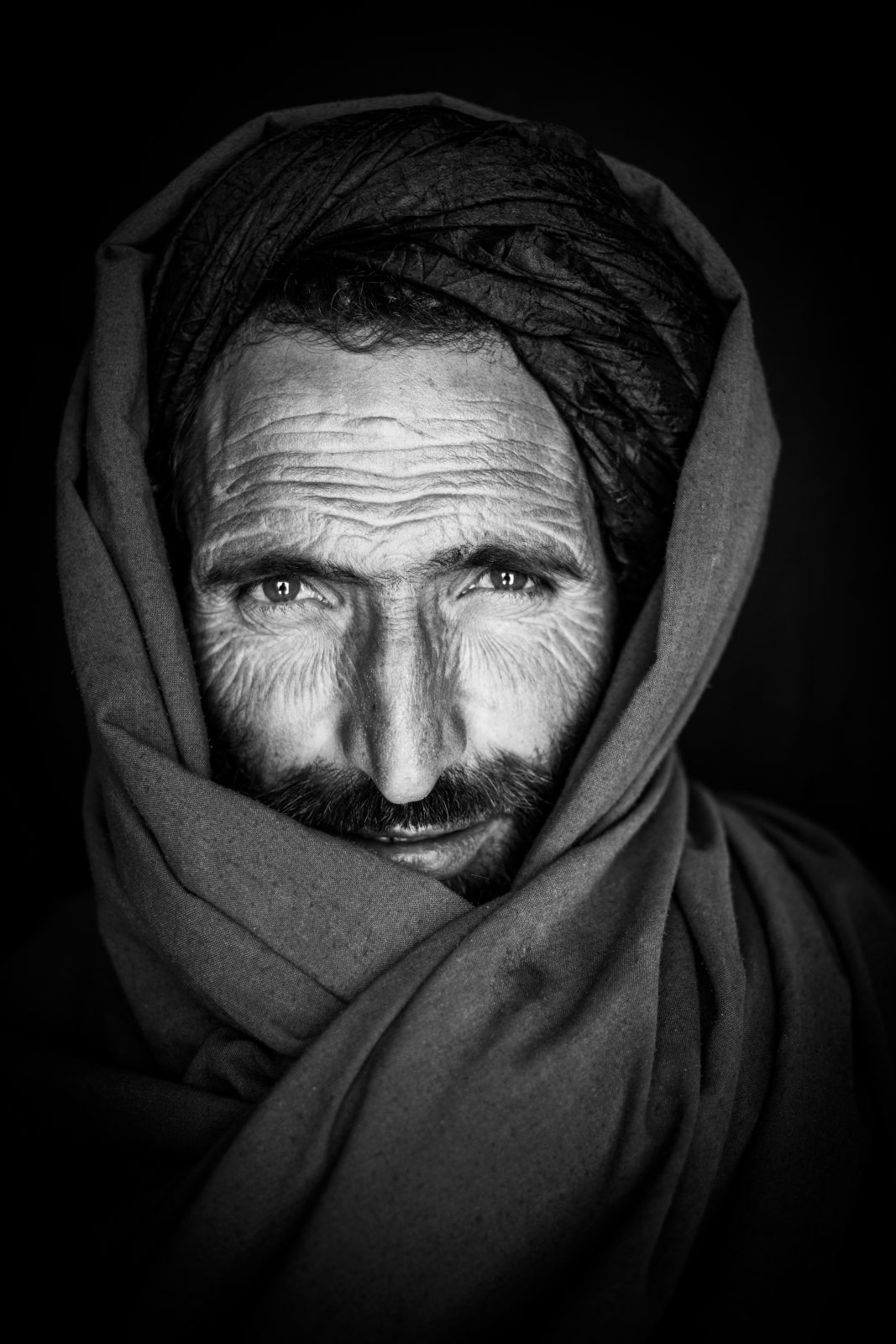
Photo: Andy Spyra
Nasrat and Nisar are waiting for us again the next morning at the district headquarters they captured. “We’ll show you how we establish peace,” Nisar says. A group of men has gathered this morning in the only intact room. It’s the Taliban’s district court. Maulavi Shaqer , the court chairman, is sitting at the front of the chamber. He is only 26 years old. “Don’t mention Pakistan,” Nisar tells him in a whisper that is still clearly audible when Shaqer starts talking about what Koran school he attended. “I studied in Ghazni,” he says. He also has dark kohl around his eyes. Before him are two merchants, one of whom has lent money to the other. The creditor claims to have given the equivalent of 800 euros, but the debtor says it was only 520 euros. “Do you have any witnesses?” asks Shaqer. The man doesn’t. “Do you have any witnesses,” he asks the other. He doesn’t either. The debtor pulls up WhatsApp messages in which the creditor has threatened him. They start yelling at each other until Shaqer says: “Enough.”
He rummages around in the plastic bag filled with papers he has placed on his Kalashnikov and pulls out a form. A strip of paper with the Taliban logo and letterhead that reads: “Ghazni Province, Rashidan District, Civil Administration.” He writes down a few lines on the sheet and refers the case to the provincial court. They’ll find a solution, he says, as the two men leave the ruin. Presumably, he says, the higher court will mediate to find a compromise between the two. “Even people from the government-controlled areas come to us with their disputes,” he says. “They have to pay a lot of money there and still don’t get justice. No case is solved there. We solve the cases.” And that’s even more important in Afghanistan than it is elsewhere, because disputes here can quickly turn into blood feuds.
The most important weapon in the Taliban’s battle against the government alliance is the Sharia courts. They also don’t always get it right, but they do pronounce law, they issue verdicts and enforce them. In contrast to government-controlled areas, where judges often take large sums of money from both parties, leaving them with the feeling that they are stuck in a morass of bribery and threats. Judges change their rulings based on favoritism, delay rulings for long periods of time and are then unable to enforce them.
As we leave the former district center on the hill, there is a sudden buzzing above us. It’s the sound of a drone cruising the valley looking for targets. The majority of the Taliban commanders killed in recent years have been victims of drone strikes. Nasrat and Nisar both look up, but they can’t see the drone. Its coloring makes the device almost invisible in the sky. They stop for a moment and then the buzzing fades away.
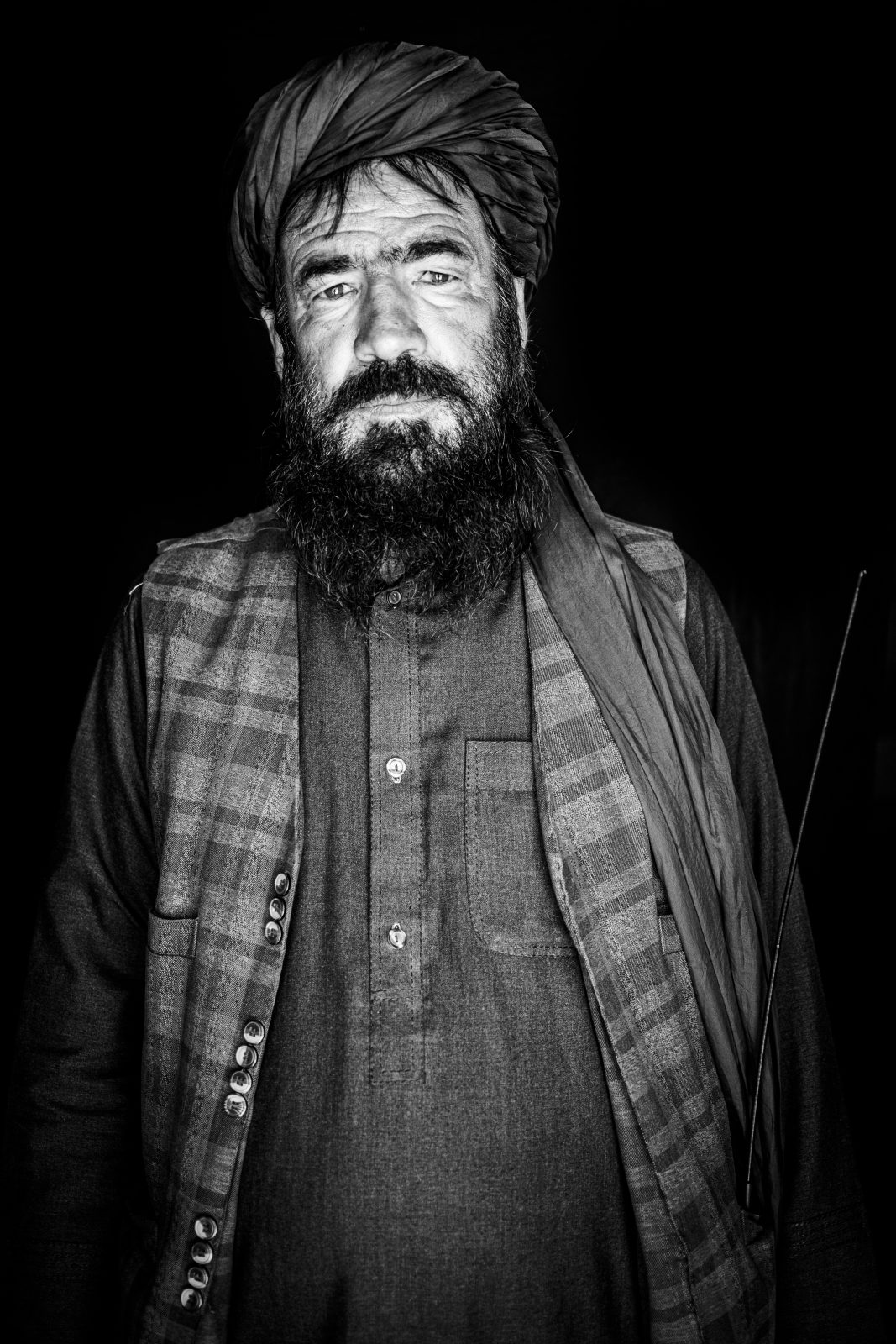
Rashidan, Ghazni province, Afghanistan – 01.09.2020:
Portrait of Maulawi Nisar, the chief of civilian affairs of Nawur district in Ghazni province. Photo: Andy Spyra
At the bazaar, the Taliban show us the small clinic, the only one in the entire district, serving 42,000 residents. Built of untreated, virgin stone, the structure was erected 16 years ago by the development agency USAID, to which a fading sign at the entrance still bears witness. We are welcomed by the director, who looks at Nisar with every sentence he utters. “We have nothing to protect people from corona. We have no masks, no gloves.” It is only a stroke of luck, he says, that the district has thus far been largely untouched by the pandemic, with just a single positive case having been identified. Cholera is a much more pressing issue, he continues. “Of 100 people, 20 have cholera,” he says, blaming the water. The washrooms in the mudbrick houses are still traditional, with just a single, clay depression where the latrine and wash bin are right next to each other. Wells in the villages have produced less and less water recently and there is no sewage system.
“I don’t know,” responds Nasrat when asked how he intends to alleviate poverty in the valley once the war has been won. He says he would build a new mosque and a new Koran school. But after that? Nasrat considers the question for a time, before responding: “I’m a fighter. I’ve been fighting my entire life. I don’t have a plan for what comes after.”
Nasrat and his staff bid farewell to us in the early afternoon. They have to prepare for an attack on a police station in the center of the provincial capital Ghazni, as we later learn. The operation will be yet another humiliation for the government. Three policemen die in the attack, while the Taliban get away with rifles and grenade launchers, allegedly without suffering any casualties of their own.
We hear explosions in the night and climb up to the flat roof of our house to listen into the darkness. The sound of shelling is coming from far away, at the end of the valley. We are told the next morning that government artillery fires randomly into villages where they believe Taliban to be. To get revenge.
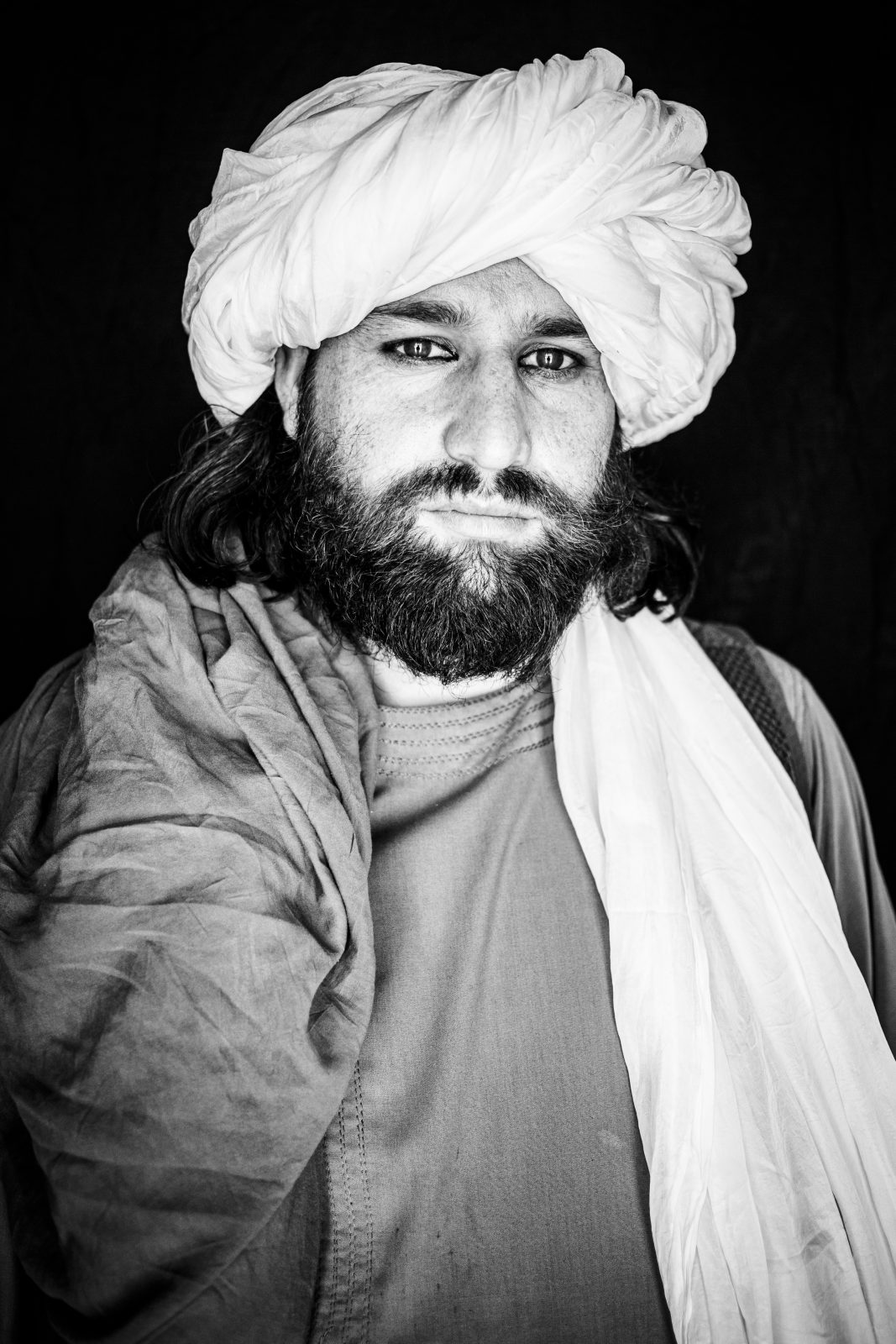
Rashidan, Ghazni province, Afghanistan – 01.09.2020:
Portrait of Maulawi Shakir, the district governor of civilian affairs of Rashidan district in Ghazni province. Photo: Andy Spyra
On this night, too, we speak with residents. We meet an older man who is also from Rashidan:
“The Taliban say they have everything here under control, but that isn’t true. In early August, a teacher was murdered. He was dragged out of his home in broad daylight by unknown people and shot to death in the fields. Some say it was because of a conflict in his family. Others say it was the Taliban. There are bad people among the Taliban as well. In general, though, it is much safer than on the government side. We are all happy that the Taliban have taken over district headquarters. We suffered immensely under the police. They would just shoot aimlessly into the valley. They would shoot at farmers who went out at night to water their fields because of the drought. They killed two children who were watching sheep. The government sent us Uzbeks and Hazaras as police, and they detest us. It was so bad that everyone kept their distance from the district center and the market was almost completely deserted as well. Since the Taliban have returned, there’s no fighting anymore. The vendors have returned, and life has improved somewhat.
Most people here in the valley still don’t support the Taliban. They just keep quiet, waiting to see what happens. Our young men who are with the Taliban went to madrassas, Koran schools, in Pakistan. We have four madrassas here in the valley. The teachers all received their training in Pakistan. The Taliban only take the best. Boys go to the Koran schools at age seven, and they sleep there too. We also have state schools. Recently, the high school got laptops, but the Taliban took them all for their madrassas. Now, the Koran schools here are better equipped than the state schools and they have better food. Students hardly learn anything at the state schools. The teachers are bad. But the ones who go to the madrassas quickly learn to read and write very well.”
The next day, the sky appears to be clear of drones. Since the U.S. has begun pulling out of its bases, the number of airstrikes has fallen significantly, with the Afghan Air Force still just as weak as it has always been. Despite all the military aid coming in from the West, the Air Force was kept small, with a limited number of planes and munitions – apparently out of concern that an Afghan general might one day use it without sufficient restraint. Nisar calls and asks if we can continue our conversation over lunch. The site he has chosen for our meeting is the home of a prosperous farmer. We find Nasrat and his staff of 25 men sitting in the room set aside for guests, which has a vaulted, mudbrick ceiling. The food is plentiful for the region, with lots of meat. Nasrat and his men never have to pay for lodging, with the people of the village having to pay for their upkeep.
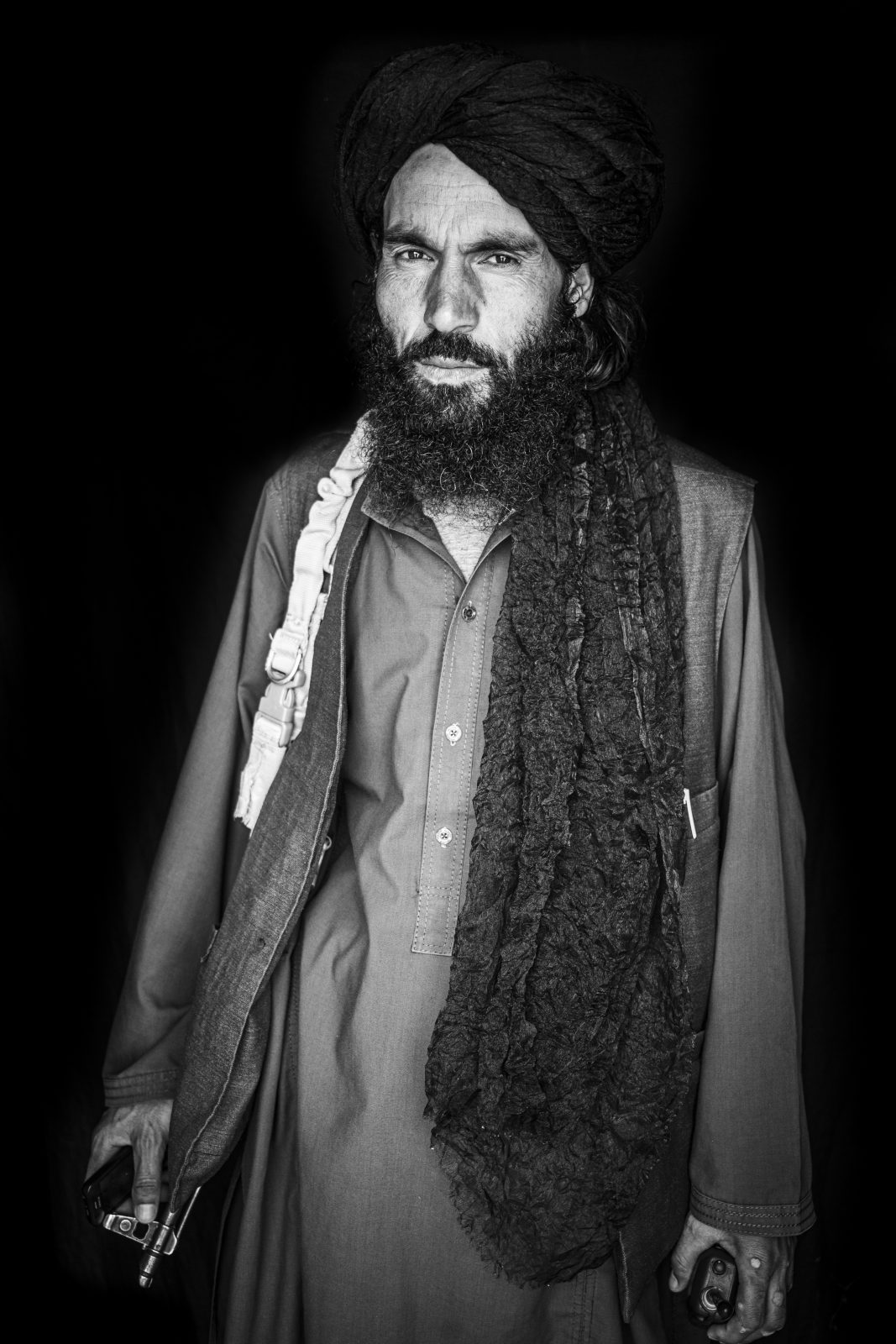
Photo: Andy Spyra
“What else should I say?” Nasrat says as he leans over to Nisar. – “Tell them that we are now united and represent all ethnicities.” – “We have members of all tribes in our ranks,” says Nasrat. “We don’t have any problems with any of these tribes.” Afghanistan is a multiethnic country made up of nine nationalities – a situation which has been the primary source of the violence in the country, with conflicts between the various ethnicities frequently fueling the violence. And despite their propaganda, all of the Taliban we meet during this trip are members of the largest ethnic group, the Pashtun.
The Rashidan Valley marks the border between two ethnicities that have lived in enmity for centuries. On the riverbanks of the valley floor, where the soil is most fertile, live the Pashtun, out of whose ranks the kings of Afghanistan came for centuries. On the scant slopes above and far into the mountains is where the Hazara live, descendants of the Mongols. The Pashtuns are Sunni, while the Hazara, like the Iranians, are Shiite. Even the Pashtun kings used to launch raids on the Hazara, plundering their villages, forcing them to pay the highest taxes, keeping them in poverty and killing tens of thousands of them. The Hazara and the Pashtun have never grown together to form a state, and in the 1990s, the Taliban continued the subjugation of the Hazara. No ethnicity welcomed the 2001 downfall of the Taliban more than the Hazara.
But now that the U.S. is withdrawing, are the two peoples facing a renewed tragedy? We hope to find answers in the neighboring district of Nawur, which is almost entirely populated by Hazara and which has been ruled by the Taliban for years.
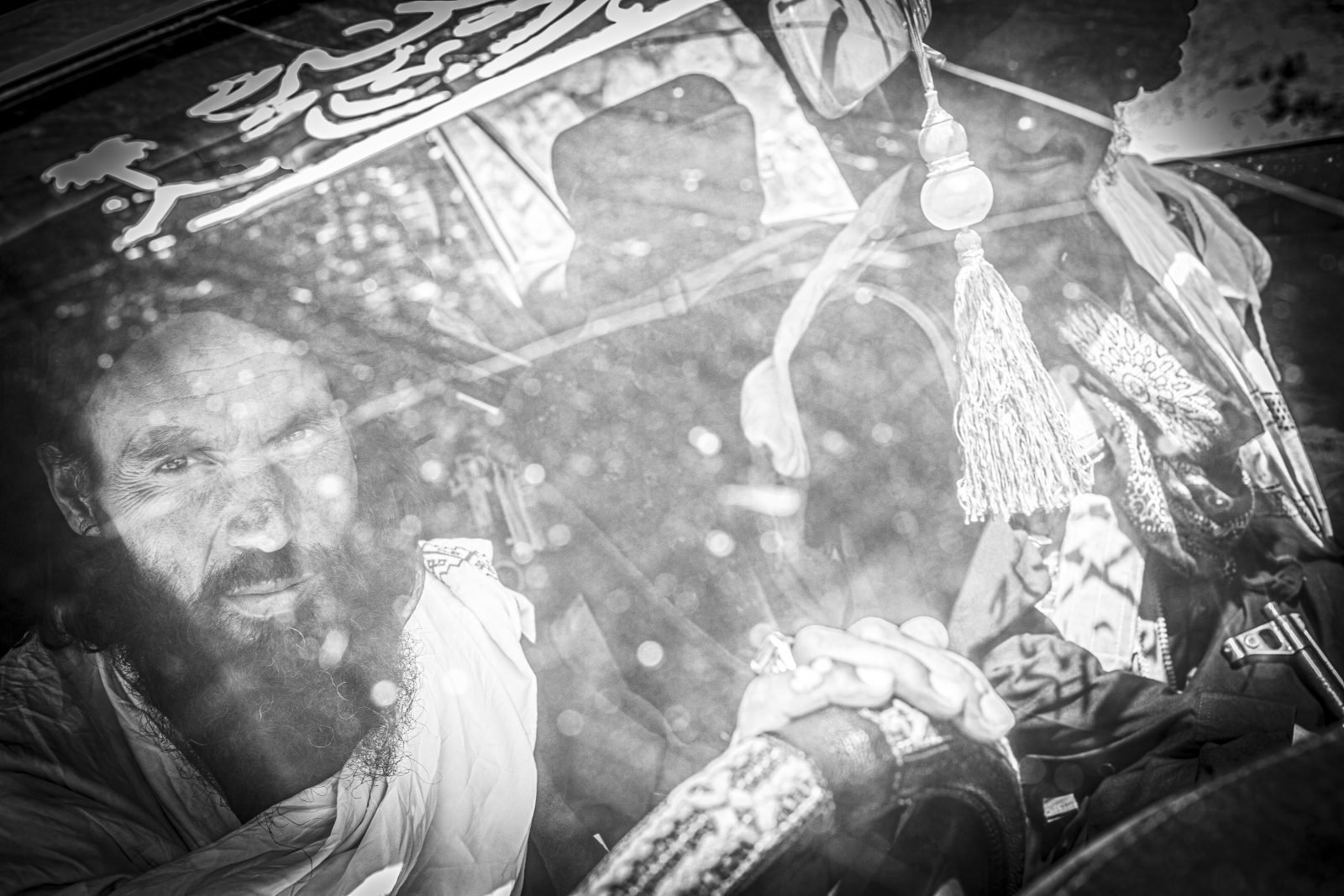
Rashidan, Ghazni province, Afghanistan – 01.09.2020:
Maulawi Nasrat (left) and Nisar in their car. Photo: Andy Spyra
The roads to Nawur are even worse, with the main arterial through the district just a lane of white dust – limestone that has been ground down over the years by the tires of heavy trucks. The villages almost seem abandoned, with more than 80 percent of the population having fled abroad in recent years, we are told. Most left for work, with Iran the primary destination. It is estimated that 3 million Afghans are now living in the country, sending money back to those who have remained – though recently it has been less and less, with Iran suffering from an economic crisis.
Shortly before the road disappears between the rock walls into a gorge, a school has been built into the hillside. It is a school of the kind that shouldn’t actually exist in areas under Taliban control. “Come on in,” the rector says after a brief discussion – Bibi Seinab High School, with 150 girls divided among six classrooms. The Taliban tolerate the girls attending school until the 12th grade because they are Hazara, but among the Pashtun in Rashidan, girls are only allowed to go to school until the sixth grade, if at all, because that’s what parents want – claim the Taliban. Many Pashtun families view education with suspicion, believing that women are supposed to help out around the house and marry young. Young brides, after all, command a higher dowry.
The girls at the school in Nawur don’t wear burkas, just headscarves. “Twenty percent of our graduates,” the rector says proudly, “go on to university.” Most study medicine in Ghazni, he says, or train to become nurses. There is no heating in the school and the panes of glass are missing from many of the windows, which means that classes are suspended in winter. In many cases, three girls have to share a single schoolbook. The rector, who founded the school just a few months after the fall of the Taliban, is an old man with thick glasses and a hunched back. But he beams when he talks about his school.
So far, he says, the Taliban have only complained about the building being too close to the main road and about the lack of a wall. The girls, they say, are thus not protected from the looks of men driving by. Plus, half of all subjects in the school are taught by men and not women. That was the excuse used by the Taliban back in the 1990s when they closed all schools for girls. We ask if he is worried about what might happen with his school if the Taliban were to take over complete power. The rector looks down for a moment before then raising his head again. “The world has forgotten us,” he says.
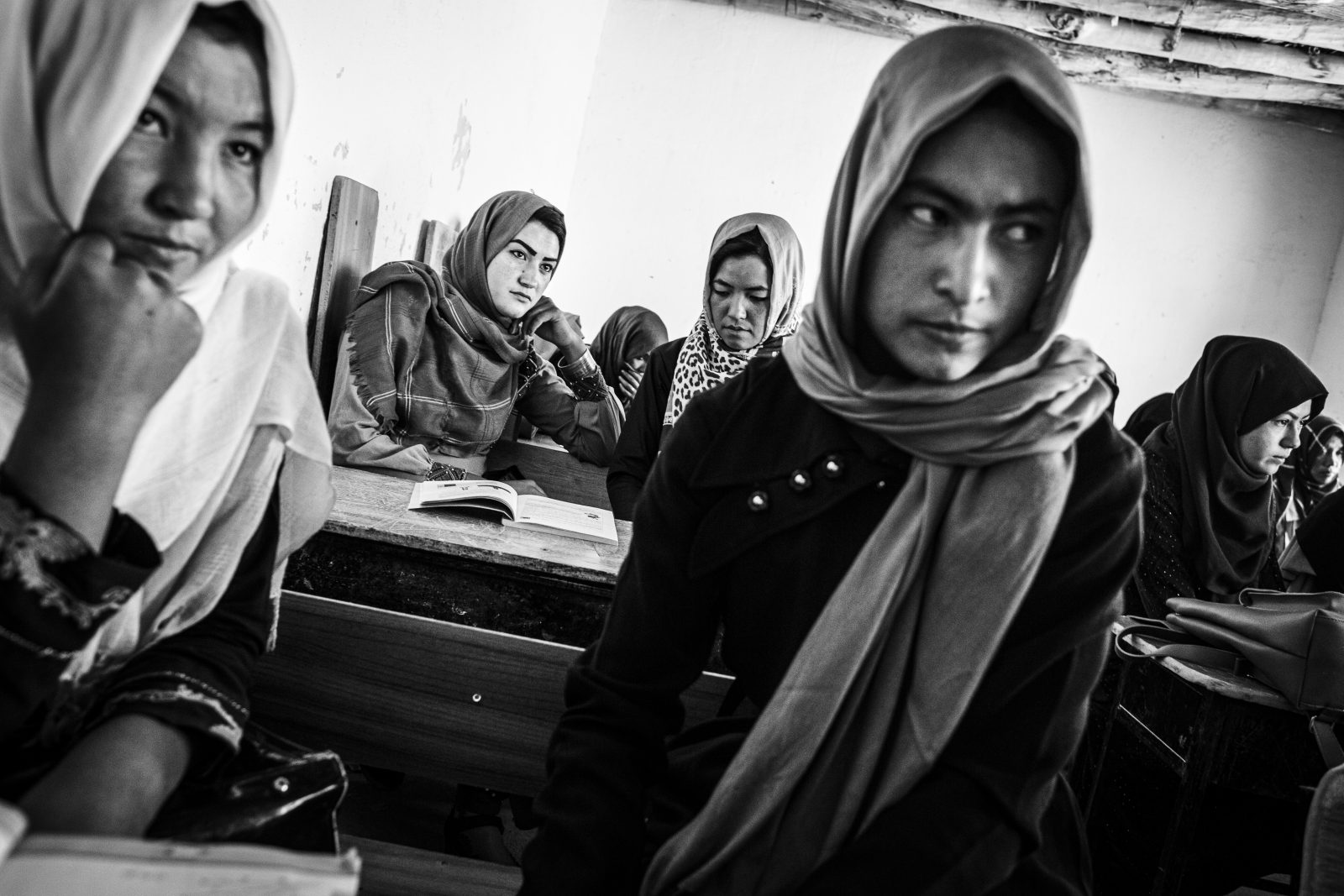
Photo: Andy Spyra
We continue following the road down into a narrow gorge, with rock walls on both sides and the sky above narrowing to a slit. The Taliban leader from Nawur has summoned us, a man named Maulavi Ahmadi. He was actually supposed to join us with Nasrat in Rashidan, but he never showed up. It is said that he was avoiding Nisar, the representative from Quetta. Which raises a question that others have wondered about as well: How unified are the Taliban actually?
For our meeting, Ahmadi has chosen a village in a remote valley. Heavy rainfall, which triggered catastrophic landslides across Afghanistan last summer, badly damaged the dirt road to the village. The place is called “the valley of the waterfalls.” The air is thin. The village is comprised of a dozen mudbrick houses huddled beneath a 700-meter cliff wall. The mountaintops above the village reach an altitude of almost 4,000 meters.
A small boy is hunkered down in the shade of one of the houses, but otherwise, no one can be seen. The boy doesn’t greet us, but looks at us with a serious expression on his face. Ahmadi shows up an hour later, accompanied by two bodyguards. “Look how beautiful our country is,” he says jovially in greeting. In his mid-30s with a white turban and a full, dark beard, Ahmadi has none of the rural characteristics of Nasrat or the solicitude of Nisar. His father, who used to be a mullah in Rashidan, he says, sent him to the madrassa as a young boy. Ahmadi speaks quietly, choosing his words carefully, his voice remaining soothingly soft even when saying something harsh. He is the epitome of the Muslim cleric – of the kind even celebrated by Osama bin Laden.
He leads us into the small mosque in the mountain village, a spare, carpeted room. Four or five village elders – Hazara – also show up, hesitantly sitting down with us. Their bodies look haggard, their cheeks hollow. It is an extremely difficult district, says Ahmadi, a Pashtun ruling over the Hazara. He says there are a total of 125,000 residents, and 75,000 of them are under his control. The government only holds power over the district center, six hours from here. “But we are working on changing that,” he says. Recently, he says, he took control of the gypsum mine, the district’s most important source of revenues. Now, the mine owners are paying their taxes to the Taliban.
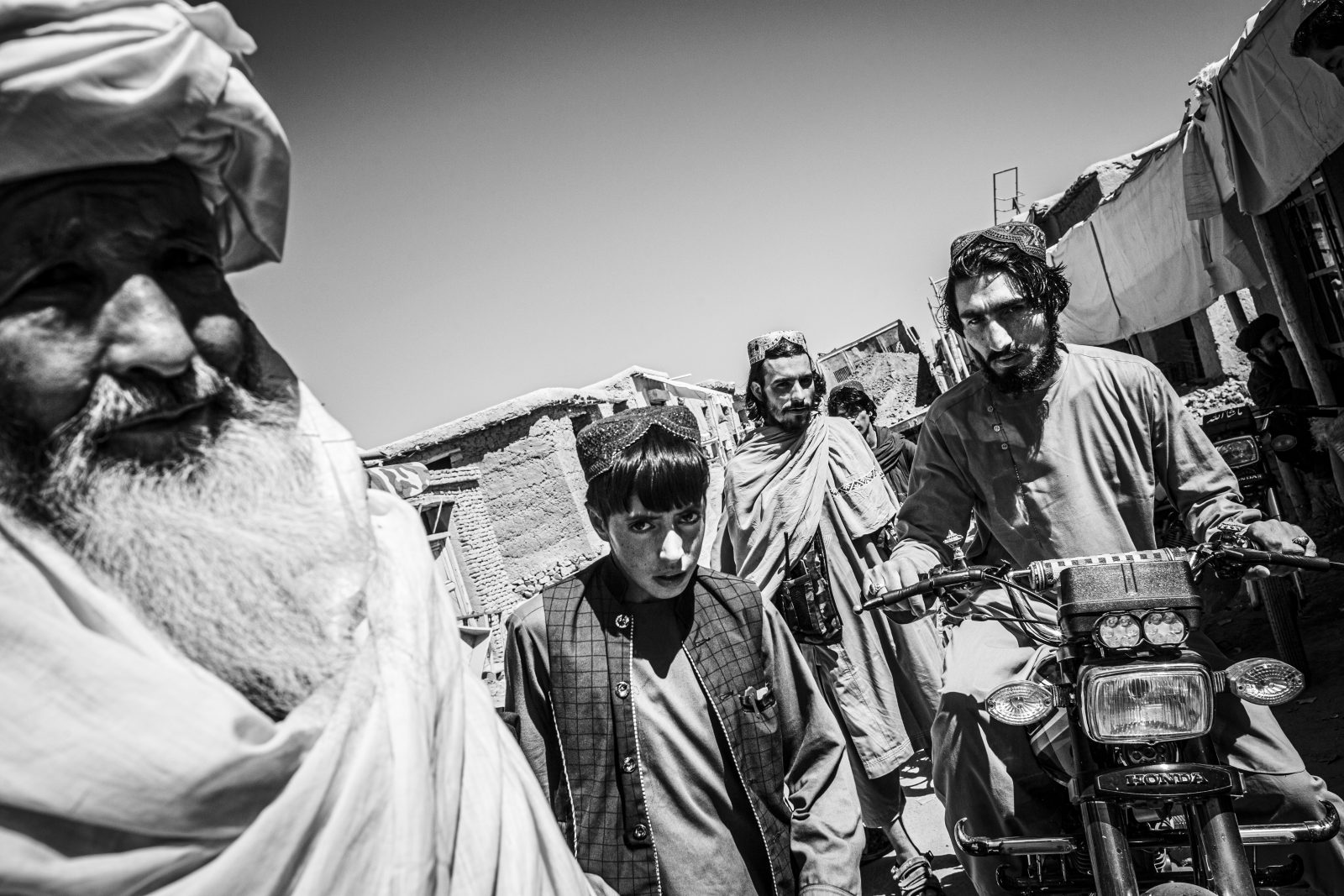
Rashidan, Ghazni province, Afghanistan – 02.09.2020:
Scene in the market of Rashidan district. So far, since the takeover of the Taliban of Rashidan and Nawur district around ten years ago, only 50 of the 250 shops have reopened. Photo: Andy Spyra
The war, it seems, has almost been won by the Taliban, but how do they intend to win the peace? In the long run, Afghanistan’s poverty will destroy almost any attempt to impose order, and Ahmadi is fully aware of that. But he has plans for his district. “We need to modernize the mines,” he says. He wants to build a dam in the valley so that more fields can be irrigated. He also hopes to upgrade the roads – but for the fact, as he readily admits, that he has no money to do so. “We want the foreign NGOs to return” he says. “We will guarantee their safety. For a time, we will continue to be dependent on them. They are welcome to come back, but we’re not going to beg.”
During a break in our conversation, with Ahmadi briefly out of the room, the elders ask us to tell him of their suffering. “Tell them that they should help us. The rain destroyed our roads. It washed away our fields. Our harvest has been destroyed.” Ahmadi, who hadn’t spoken a word to the elders, repeatedly ignores our ensuing questions before finally saying: “We don’t have any money. The only thing we can do is encourage aid organizations to come.”
Ahmadi is also hoping for assistance from refugees in Germany. “There are a lot of experts among them. We need them to build up our country.” Nothing will happen to them, he insists. But those who committed crimes on behalf of the government can expect severe punishment, he says. “I can’t call them Afghans anymore.” He earnestly thanks Germany for taking in the refugees, but also accuses the Germans of having done great harm in Afghanistan with their military. The troops, he said, killed innocent people, and it is still too soon to forgive the soldiers. “I still feel hatred toward them. Yes, I hate them.”
Noon has arrived in the mosque and the elders ask Ahmadi if the 10 guests can be divided up in pairs for the midday meal among several families to share the burden. “No,” Ahmadi says, “we’ll eat in the mosque.” As such, despite their privation, the elders must serve the guests alone. In the coming week, their families will have hardly anything to eat because their supplies will have been used up on our meal. Silently, they watch as we and the Taliban eat.
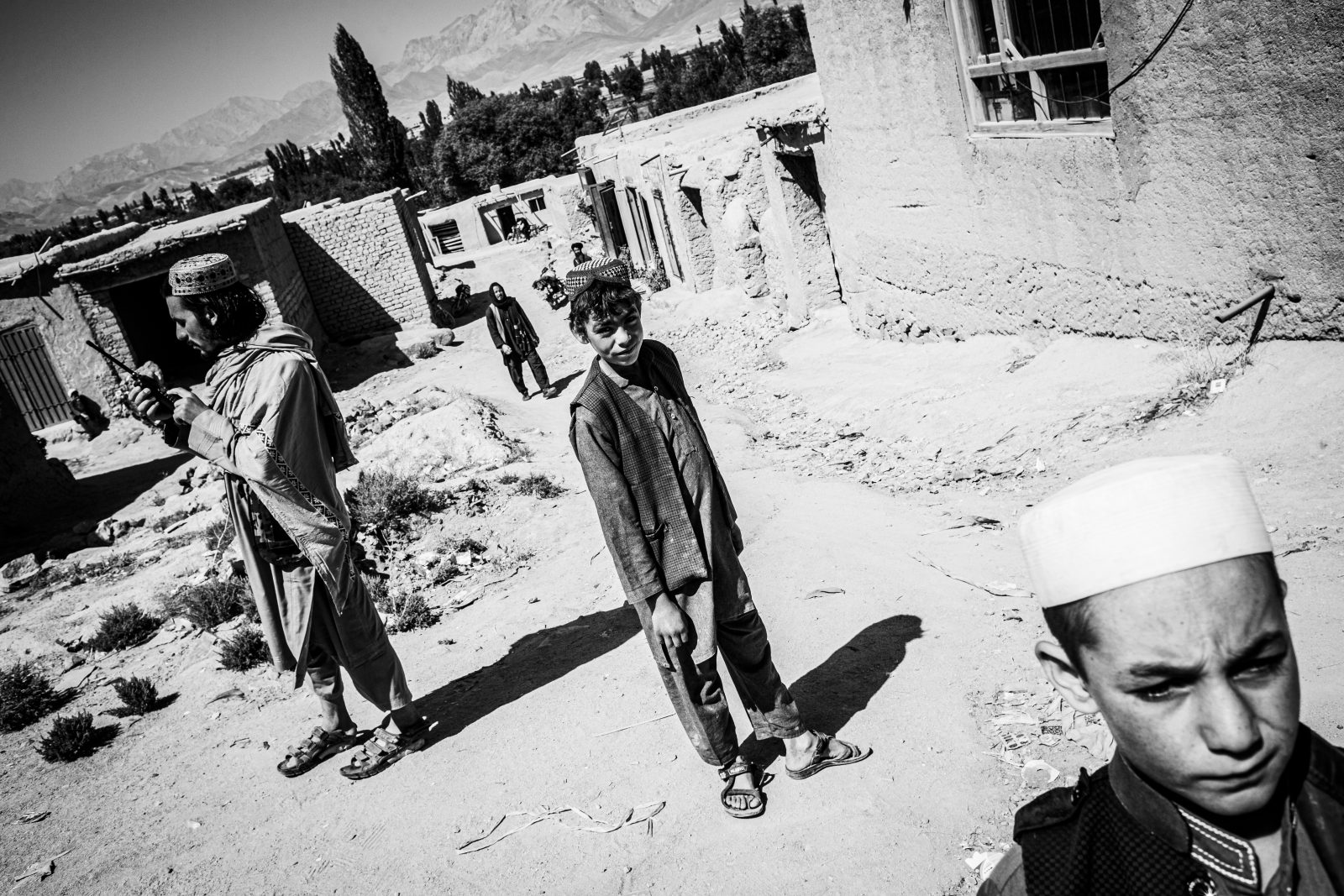
Rashidan, Ghazni province, Afghanistan – 02.09.2020:
Scene in the market of Rashidan district. So far, since the takeover of the Taliban of Rashidan and Nawur district around ten years ago, only 50 of the 250 shops have reopened. Photo: Andy Spyra
In parting, Ahmadi invites us for a bit of target practice behind the village. We politely decline, but Ahmadi is looking for a bit of diversion. He accompanies us to the waterfall, a holy spring that can allegedly alleviate mental illness. One of his bodyguards fires off an American M16, an assault rifle that he claims to have taken from a U.S. soldier a year and a half ago. “First, I shot him, and then I took his weapon,” the man says with a grin. The second bodyguard relates that they had celebrated the release of one of their fighters a couple of days earlier. The Afghan government, under pressure from the U.S. and militarily weaker than ever, has had to release 5,000 Taliban this year. One of them is from this area, the bodyguard explains. He was taken prisoner in 2004 after murdering Bettina Goislard in Ghazni, a 29-year-old French woman working for the UN Refugee Agency. “We celebrated his return until late into the night.”
None of the three managed to hit the patch of grass high up in the rocks that they had chosen as their target.
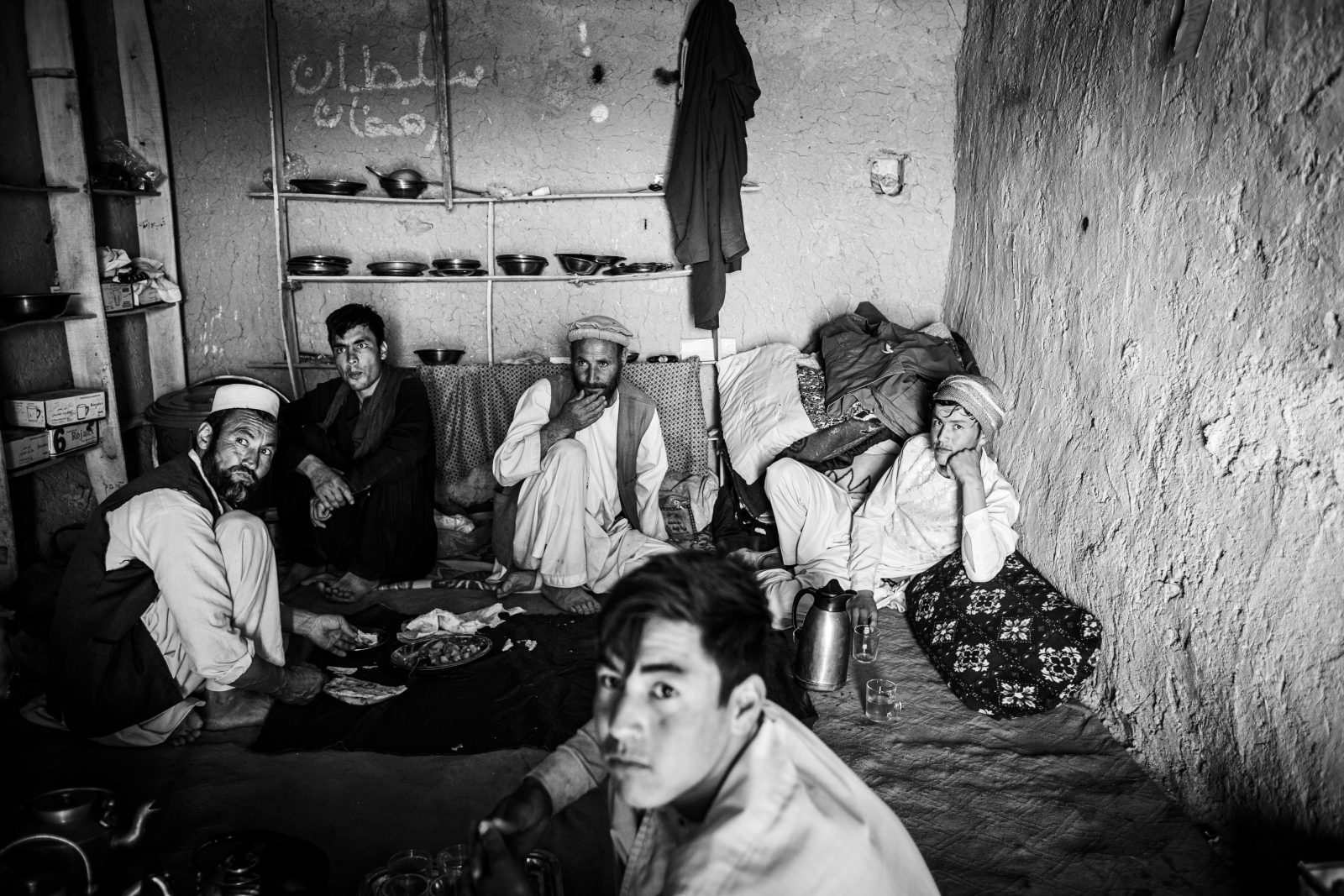
Nahur district, Ghazni province, Afghanistan – 02.09.2020: Scene in a tea house at the Nawur – Ghazni main road. Photo: Andy Spyra
Once again, we spend the night down below in Rashidan. And again, we listen to stories told by the villagers:
“Up until two years ago, the Taliban here were extremely strict. They would stop us in the street and search us, looking for smartphones. You’re only allowed to have normal mobile phones. If you are one of them, though, they let you have a smartphone for access to the internet. Now, though, they are more relaxed. Still, it always depends on who the commander is at the moment. Ahmadi used to be very strict, but you could always talk to Nasrat. The worst is when Taliban come to us from the outside. When that happens, we remove our satellite dishes from the roof and put them in the yard. Otherwise, they would beat us and destroy our satellite dishes with an ax. Why are you watching the channels of the infidels, they ask?
The Taliban have changed a lot. They have become much more corrupt. Recently, they all got new mopeds. Many of them have two or three wives and send their families to Ghazni or Kabul. Here, the people who suffer most are those who live near the mosque. Big groups of Taliban spend the night there, and the neighboring families have to feed them. They say things like: We’re fighting against the infidels, and what are you doing? You don’t even want to give us a meal? Forced marriages are a big problem. The families cannot refuse when a Taliban leader wants to marry one of their daughters. They take advantage of our poverty. It’s a taboo here, people don’t talk about it.
Poverty here has grown worse. In recent years, there has been very little rain. We have only been able to irrigate a third of our fields. There is no longer any work in Iran and our relatives there are only able to send us very little money. A lot of families are unable to pay the dowry and there are 90 percent fewer marriages than just two years ago. The fathers of the girls are asking for far too much money. They are too greedy. Here in our region, they used to want an average of 10,000 euros. We spoke with the Taliban, and a year and a half ago, they announced in the mosques that the dowry could not be higher than 3,500 euros. But that is still too much. The Taliban are refusing to further reduce the amount. There are so many couples here who run away to Kabul.
The Taliban don’t really care about us. They only care about themselves. It’s almost the same as it was with the warlords. We’re lost. We don’t know what is better, the government of the warlords or the Taliban.”
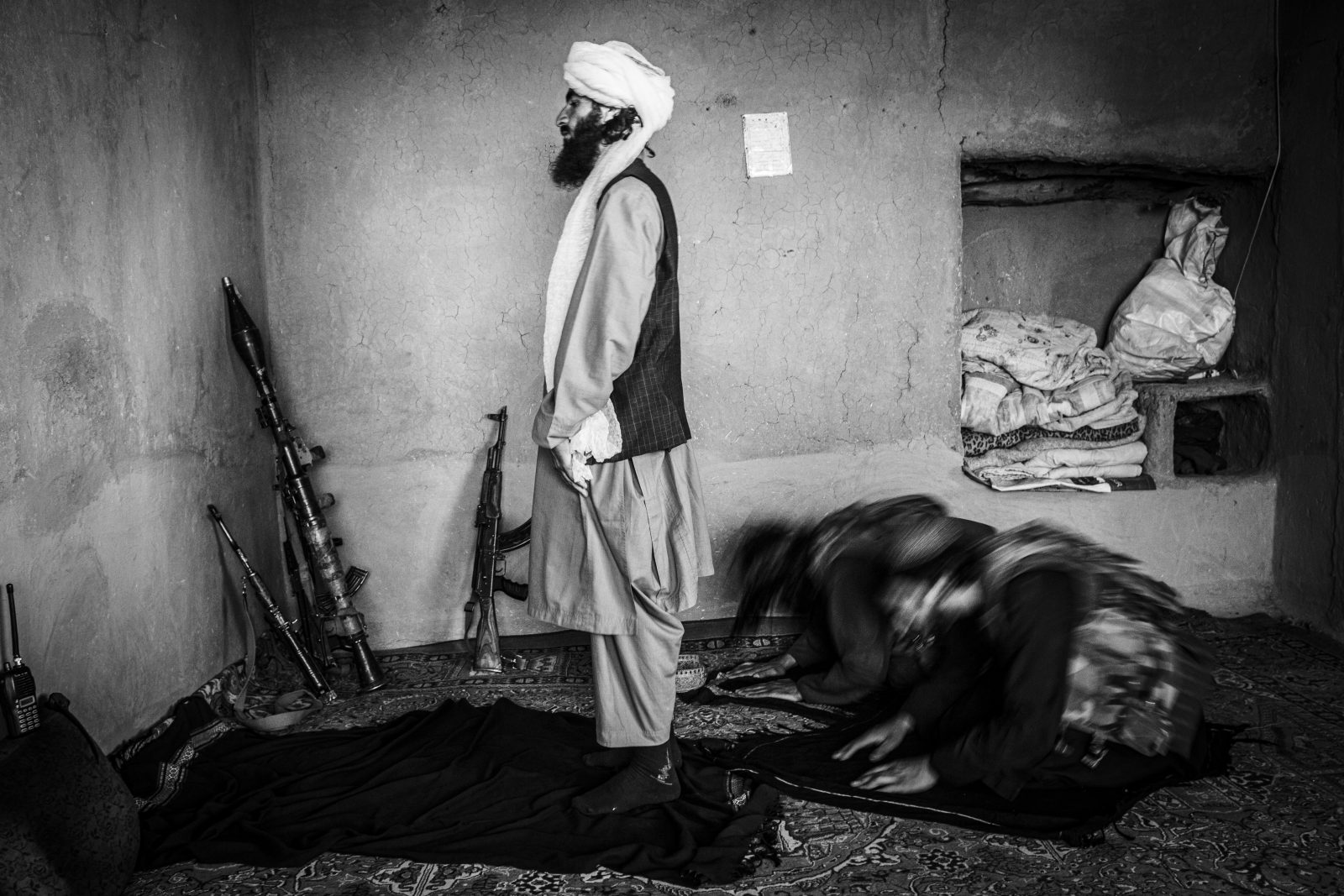
Nawur district, Ghazni province, Afghanistan – 02.09.2020: District commander Ahmadi prays alongside his bodyguards in the ‚Hotel Said’ along the Nawur-Ghazni road. Photo: Andy Spyra
For many years in Afghanistan, it looked as though no side was able to achieve a decisive military advantage. The three shura of the Taliban began fighting each other, and then Pakistan arrested the leader of the Quetta Shura, Mullah Baradar, allegedly because he wanted to conduct peace talks with Kabul and Pakistan didn’t approve. His successor, Akhtar Mohammad Mansour, began looking for alternative sources of money. According to numerous studies, he found it in drug smuggling, and under his leadership, Afghanistan once again became one of the world’s largest producers of opium. In the years 2014-2015, drug revenues for the Quetta Shura are thought to have amounted to $285 million. The situation for the government in Kabul grew particularly tenuous when Iran joined Pakistan in supporting the Taliban. The more threatening the U.S. was in its stance toward Iran, the more Tehran intervened in Afghanistan. In 2012, Iran established its own shura in the city of Mashhad, called the Mashhad Shura. With Iranian help, the Taliban was able to conquer large swaths of northern Afghanistan. According to studies, Iran jacked up its funding for the Taliban from $30 million in 2006 to $190 million in 2013 – which did not, however, prevent Tehran from continuing to pay millions to the government in Kabul. It wanted to continue to wield influence there, too.
The Taliban have long accused Kabul of being little more than the puppet of foreign powers. But in fact, they find themselves in a similar situation. Many different powers are pulling on the Taliban, and while they used to all pull in different directions, at the moment they apparently share the same goal: minimizing Western influence in Afghanistan. The improved coordination of external assistance has allowed the Taliban to tighten up internal organization, and at the peace negotiations in Doha, they were able to show a united front. But nobody knows for how long this unity will last. Already, groups are deserting to an even more radical organization – one which wants to continue fighting and does not intend to stop at the borders of Afghanistan: the Islamic State.
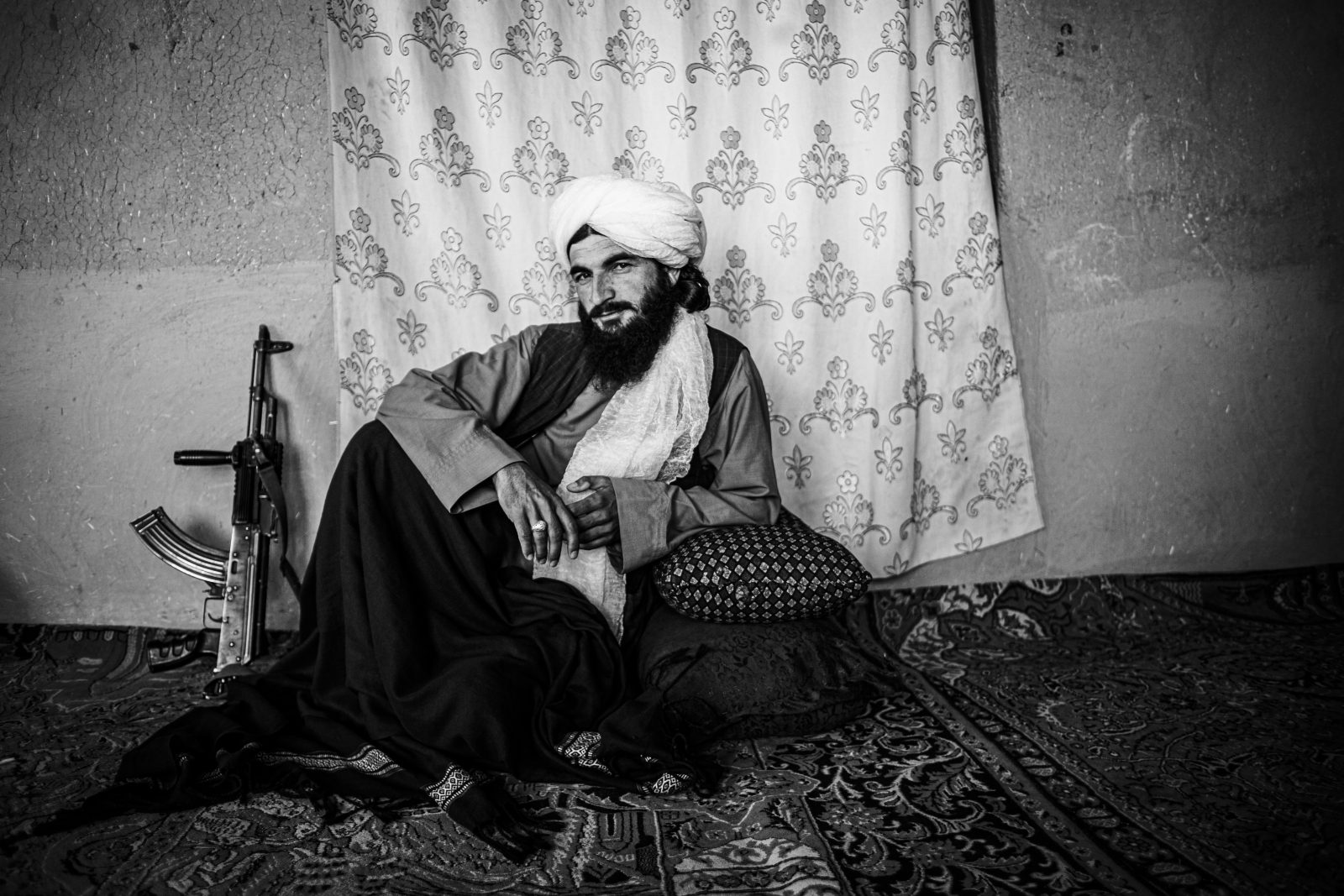
Nawur district, Ghazni province, Afghanistan – 02.09.2020: Portrait of Nawur district commander Ahmadi. Photo: Andy Spyra
On the morning of the fifth day, we leave Rashidan shortly after sunrise. “Be careful,” says Nisar, who accompanies us to the edge of Taliban-held territory. “There are a lot of government spies among us.” We are eager to avoid being arrested as Taliban supporters during our return trip by over-eager Afghan security personnel. Nisar leads the way on his motorcycle, using roads that he knows are not patrolled. He smuggles us through the peripheral villages and into Ghazni, easily avoiding all of the roadblocks – just as the Taliban do when they attack the city. We wave at each other, and then he disappears into the dust of the dirt road.
Once again, the future of Afghanistan is completely uncertain. Most observers believe the peace negotiations will soon collapse. The wounds on both sides are still deep after so many years of war, and many Taliban commanders don’t want to relinquish part of the power when they might be able to have it all. That, though, could turn out to be a significant miscalculation. Conquering Kabul, with its several million inhabitants, would be far bloodier than the fighting in the villages. Holding it could be even more difficult. The rift dividing Afghan society’s conception of values has simply grown too deep. What does unite them is precisely what is dividing them: the injuries, the mourning, the hate. Reconciliation will take time – time that the country doesn’t have.
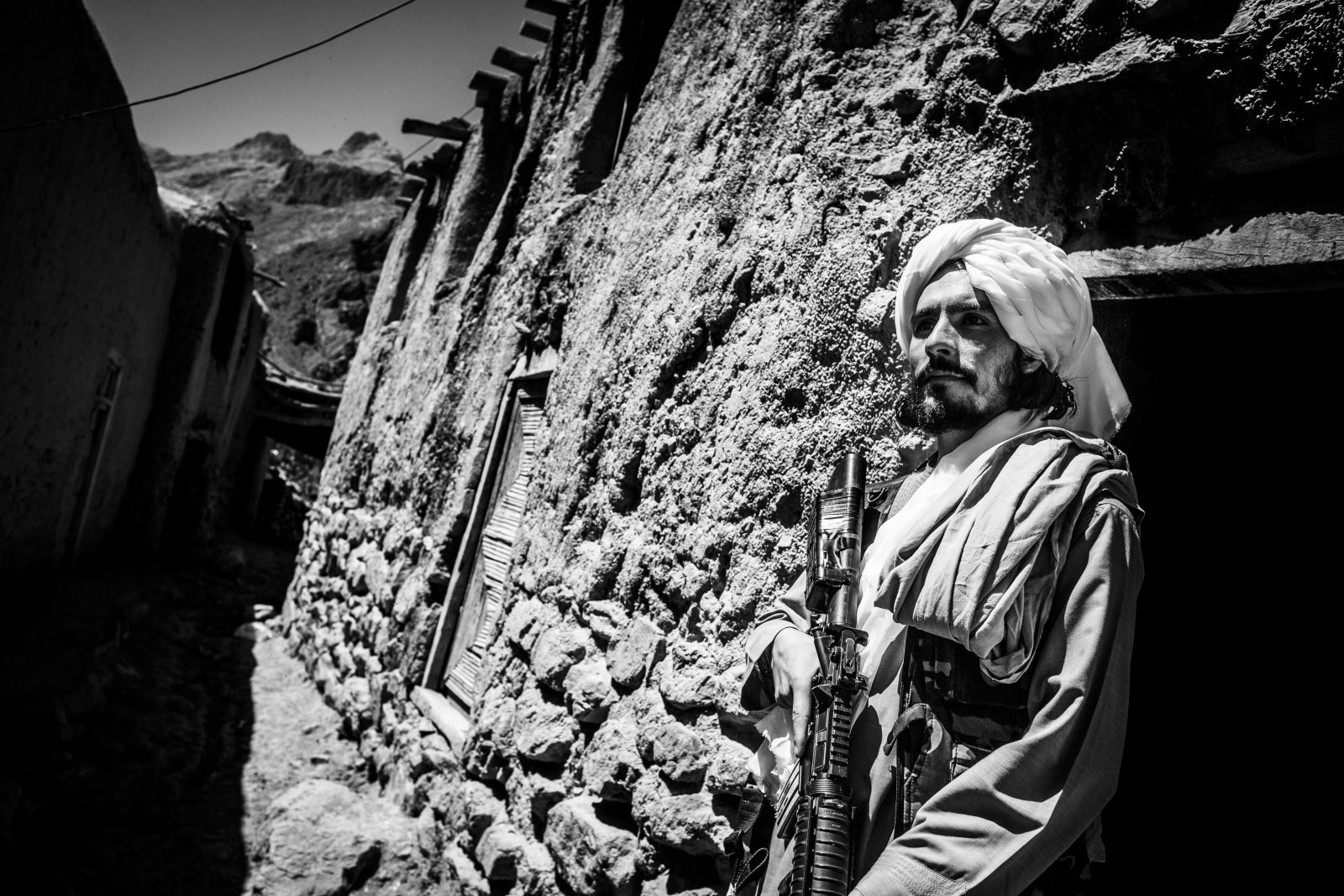
Allauddin Village, Natur district, Ghazni province, Afghanistan – 03.09.2020: Omar Sadiq, the bodyguard of military district governor Ahmadi, can be seen guarding the entrance to the local mosque where Ahmadi is present during a meeting. Photo: Andy Spyra
On our return trip to Kabul, we again see the remains of an almost defeated army – the army of a government for which the West, until recently, had high hopes. It is an endless series of burned-out wrecks and stormed military posts. A field of rubble stretching for 170 kilometers. Village residents have begun trucking away the clay from the old defensive wall to sell it for construction.
“How could it have come to this?” asks a high-ranking Afghan diplomat on one of our last days in Kabul. It is a beautiful, balmy evening. He has invited a group of senior officials from different ministries to his terrace for an opulent buffet with delicious dishes. Red wine glasses in hand, the officials listen intently into the night. Heavy fighting is underway not far away. The shooting has been going for hours and assault helicopters continually fly over the terrace. The officials begin frantically calling their contacts in the security services, but they are told it is just an exercise. The security forces don’t want any panic. “We should go,” says one of the guests. “I’m afraid that all of the arterial roads will soon be blocked.” But it’s much too early, the host complains. “Please stay,” he says. It’s not yet time to go.
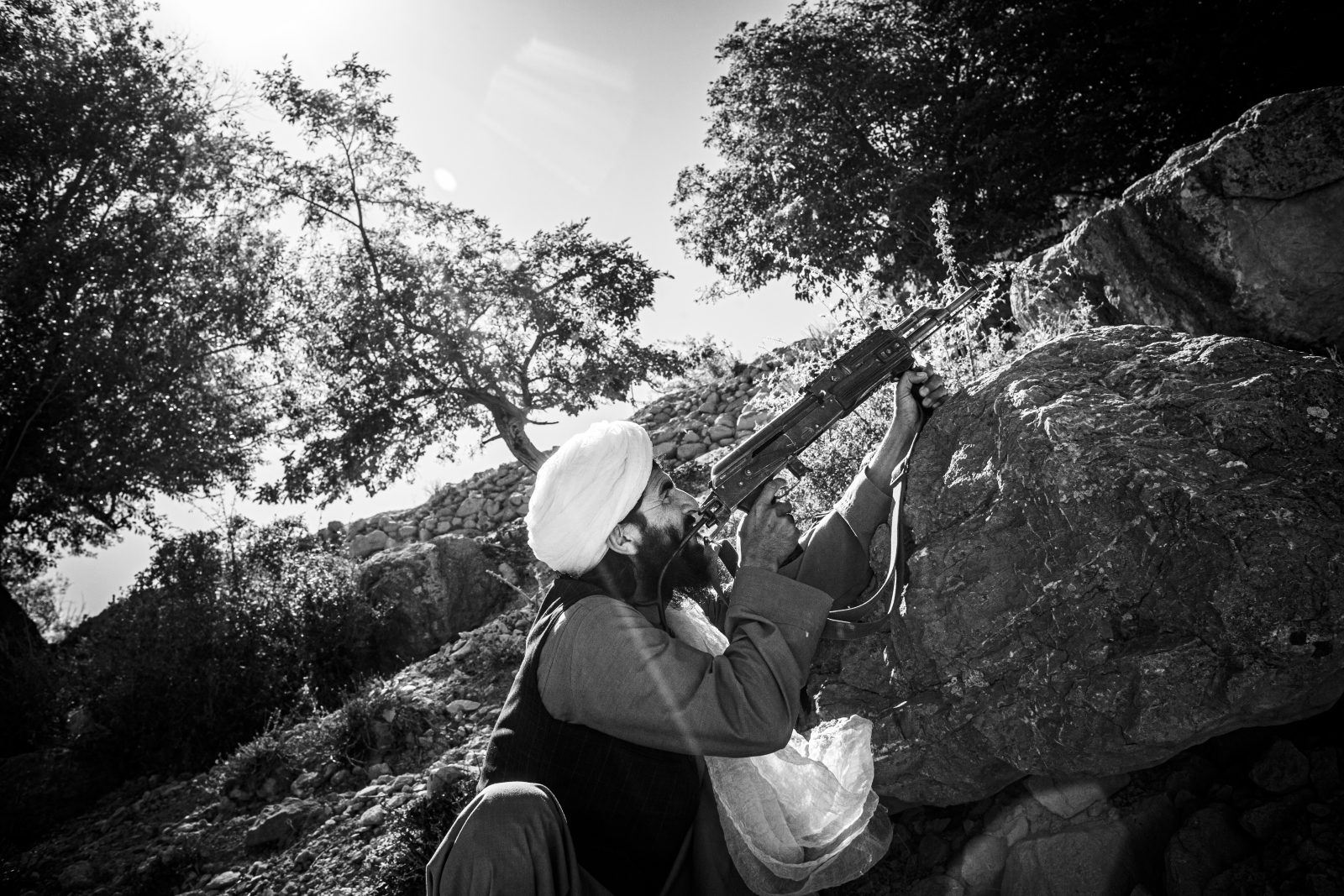
Allauddin valley, Nawur district, Ghazni province, Afghanistan – 03.09.2020: District commander Ahmadi during a shooting practice in the Aladdin Valley in Nawur district. Photo: Andy Spyra
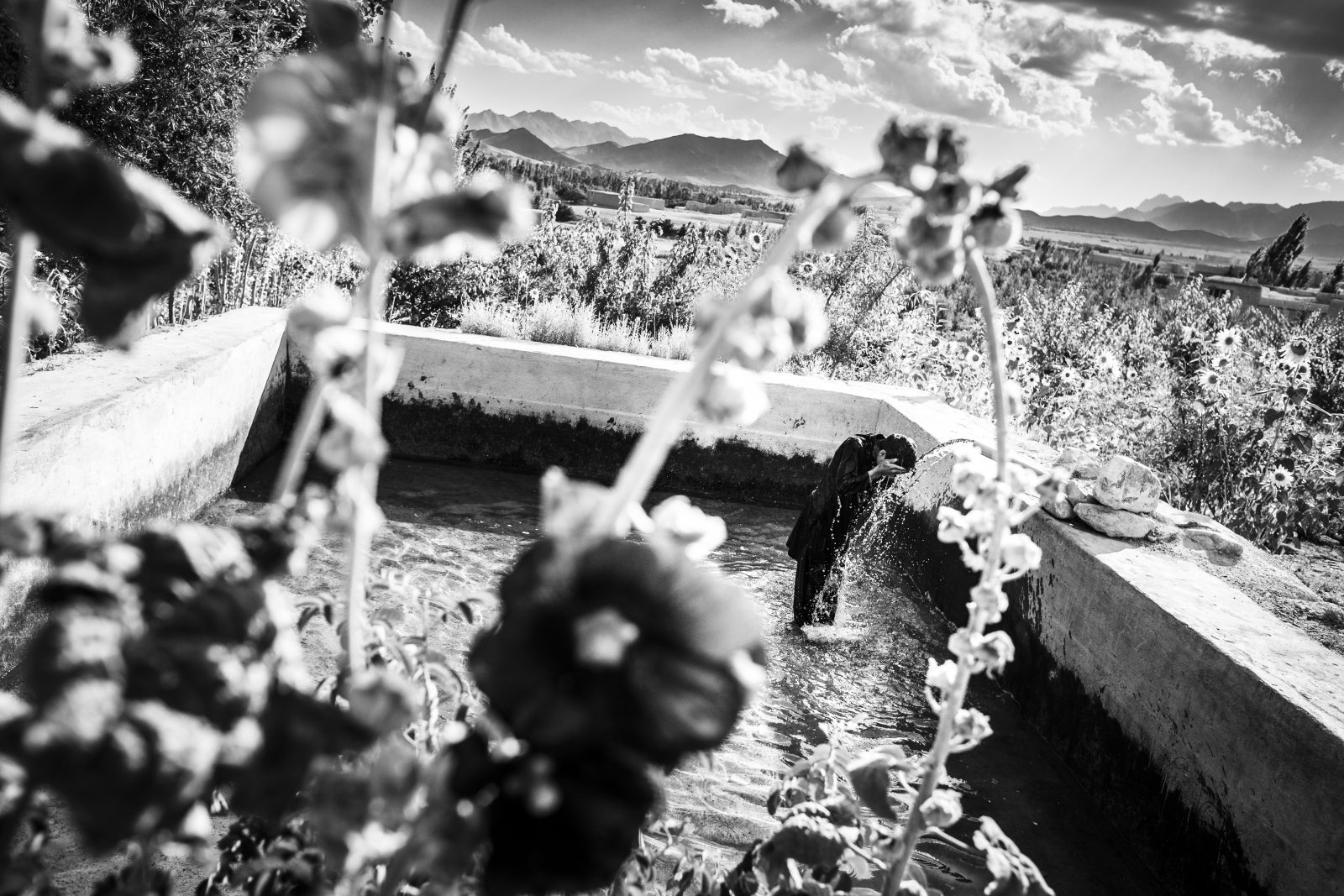
Rashidan, Ghazni province, Afghanistan – 01.09.2020:
A young boy is washing himself in a well in Rashidan district. Photo: Andy Spyra
Behind the Story
Only after months of negotiation did the Taliban’s senior military council agree to allow our reporters to visit. They were supported in the effort by British filmmaker Najibullah Quraishi, who has been reporting on the Taliban for years and joined us on our trip as a translator.
Translators: Charles Hawley and Daryl Lindsey





